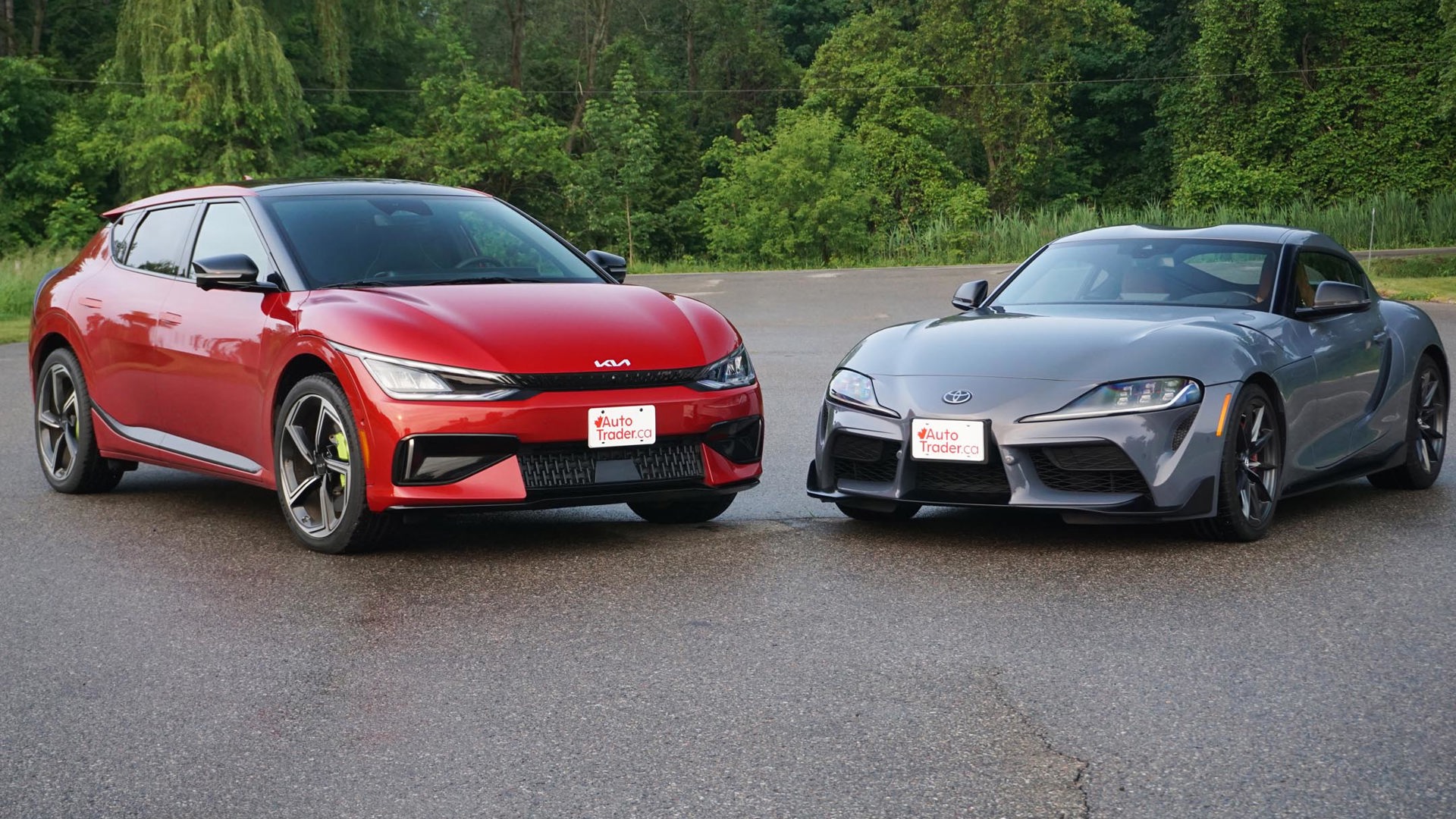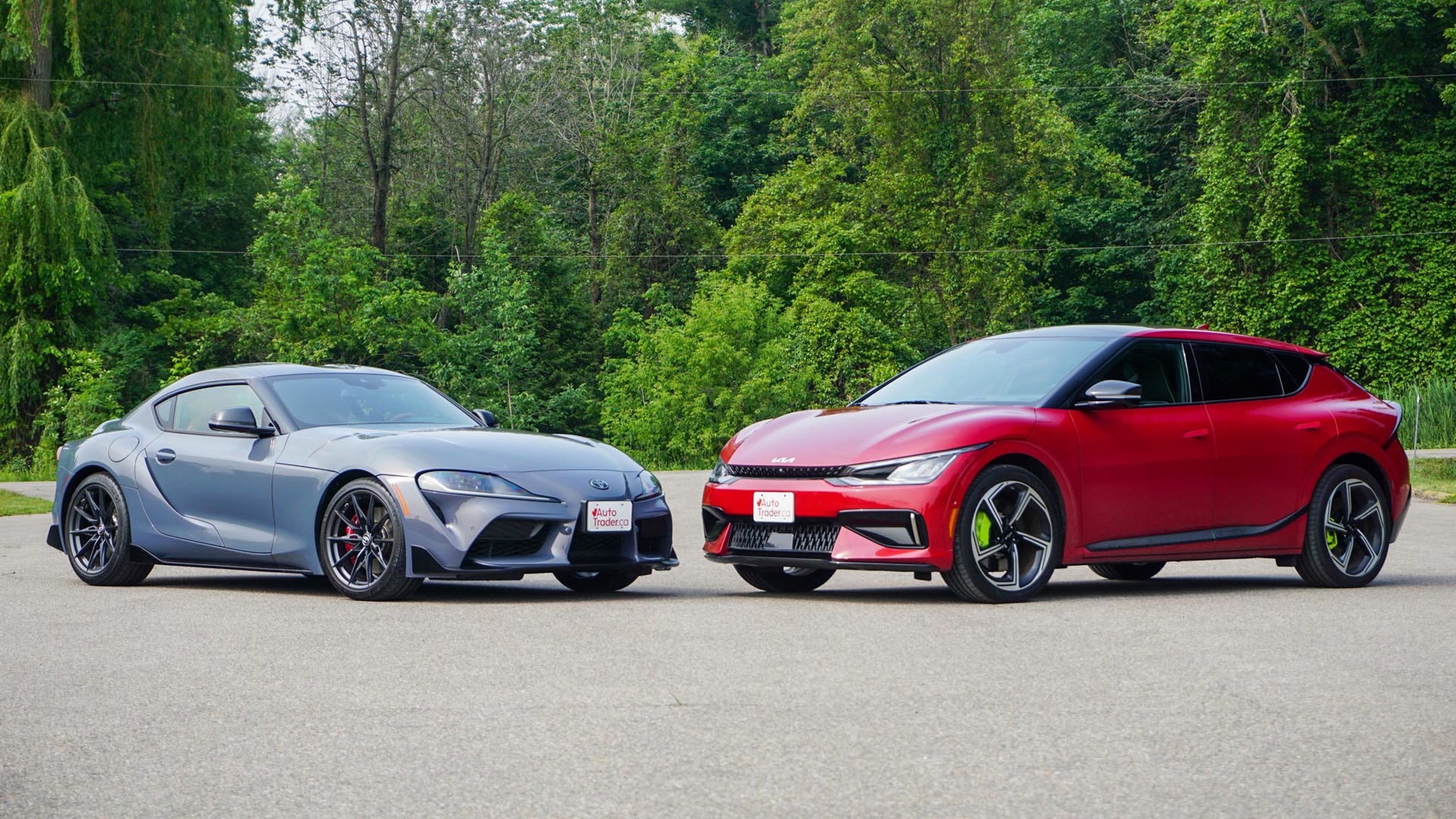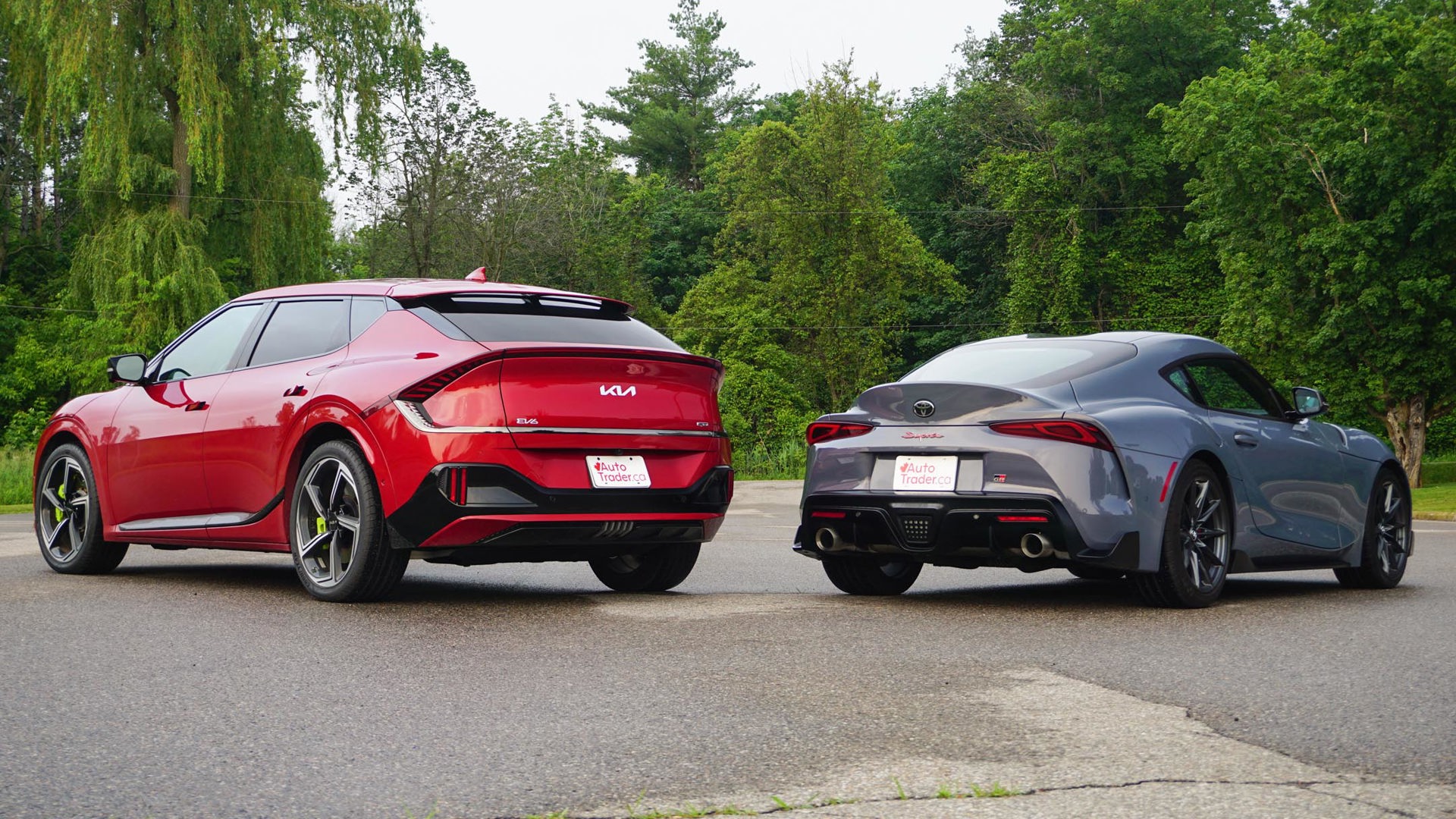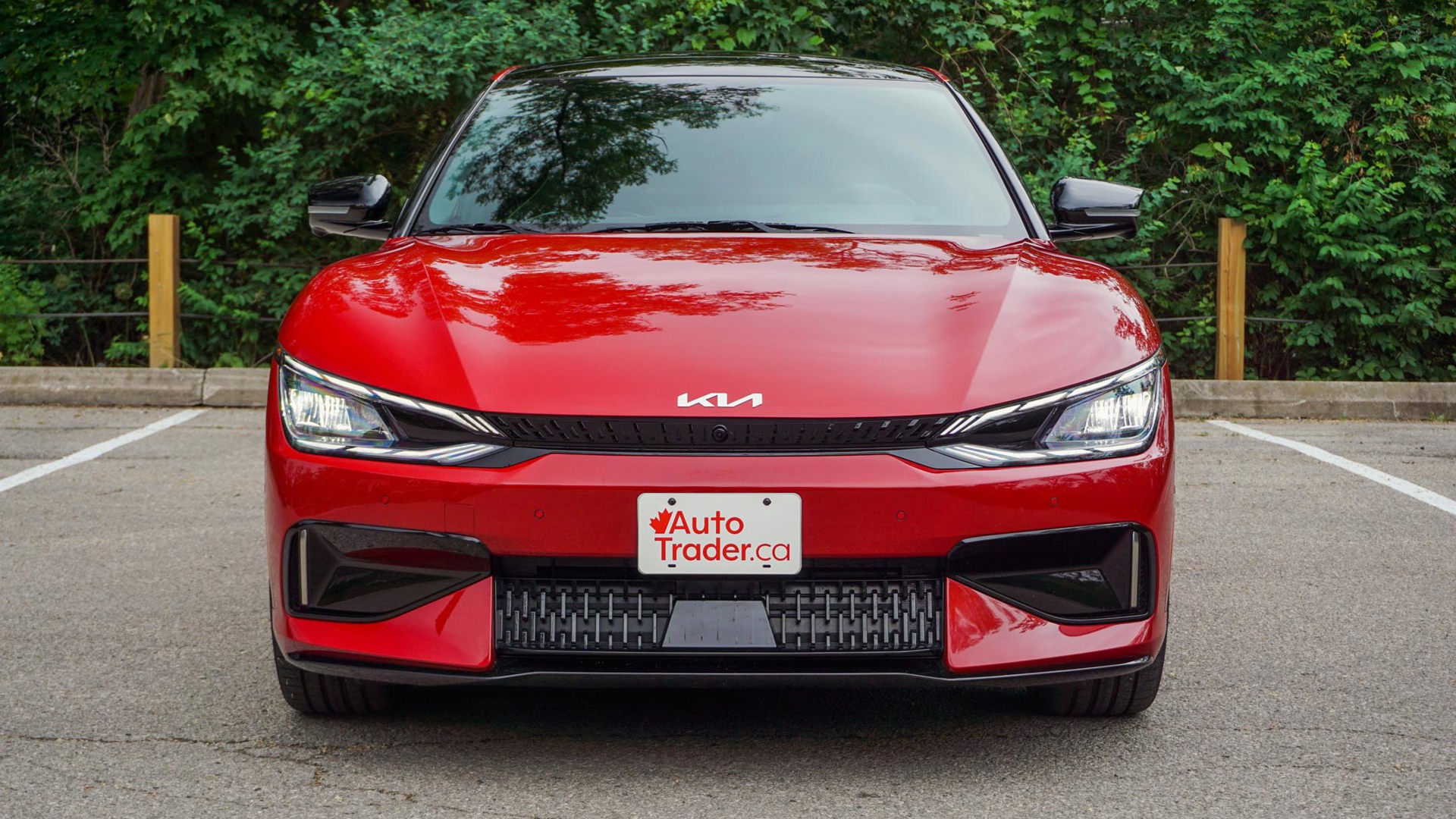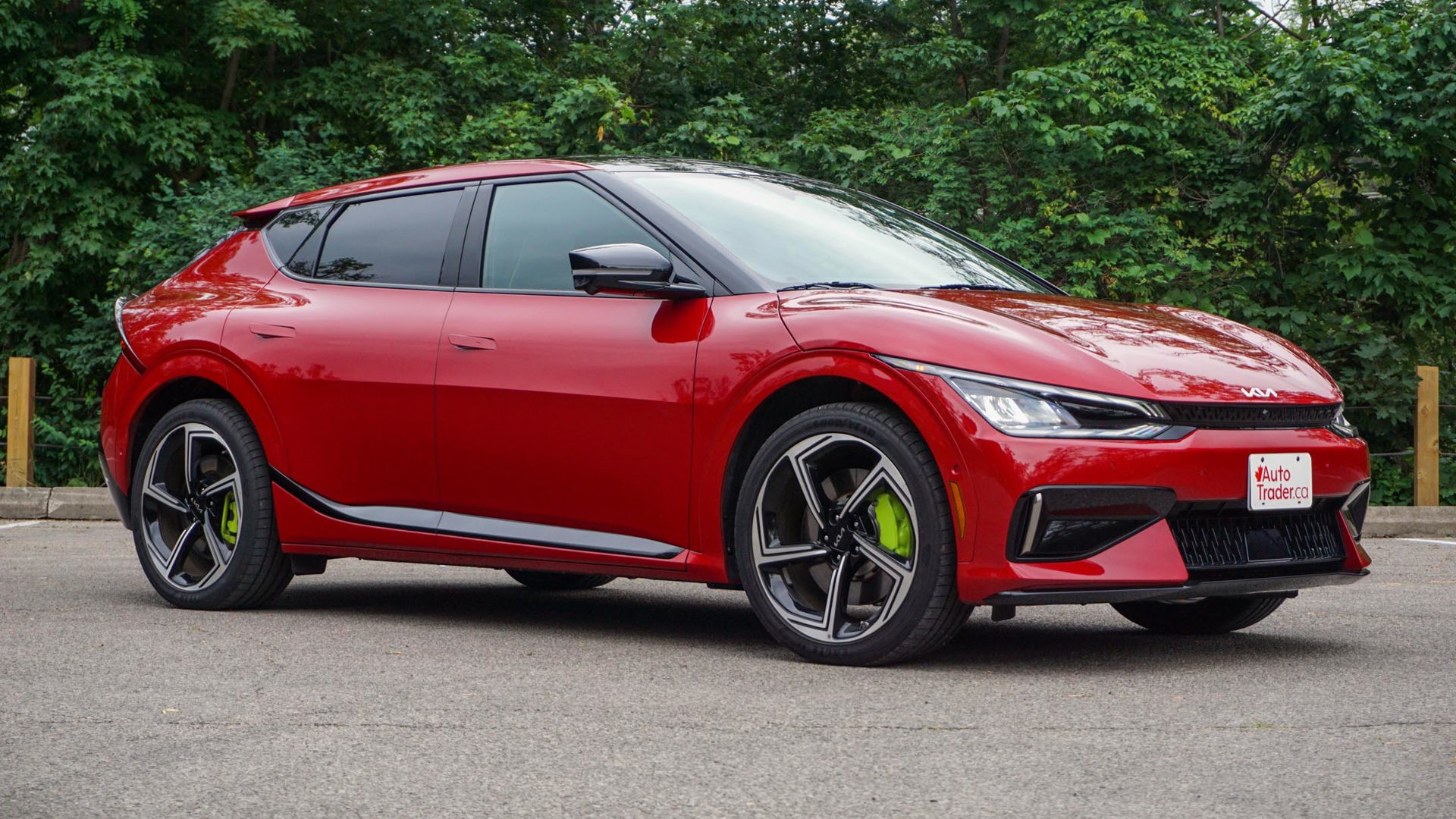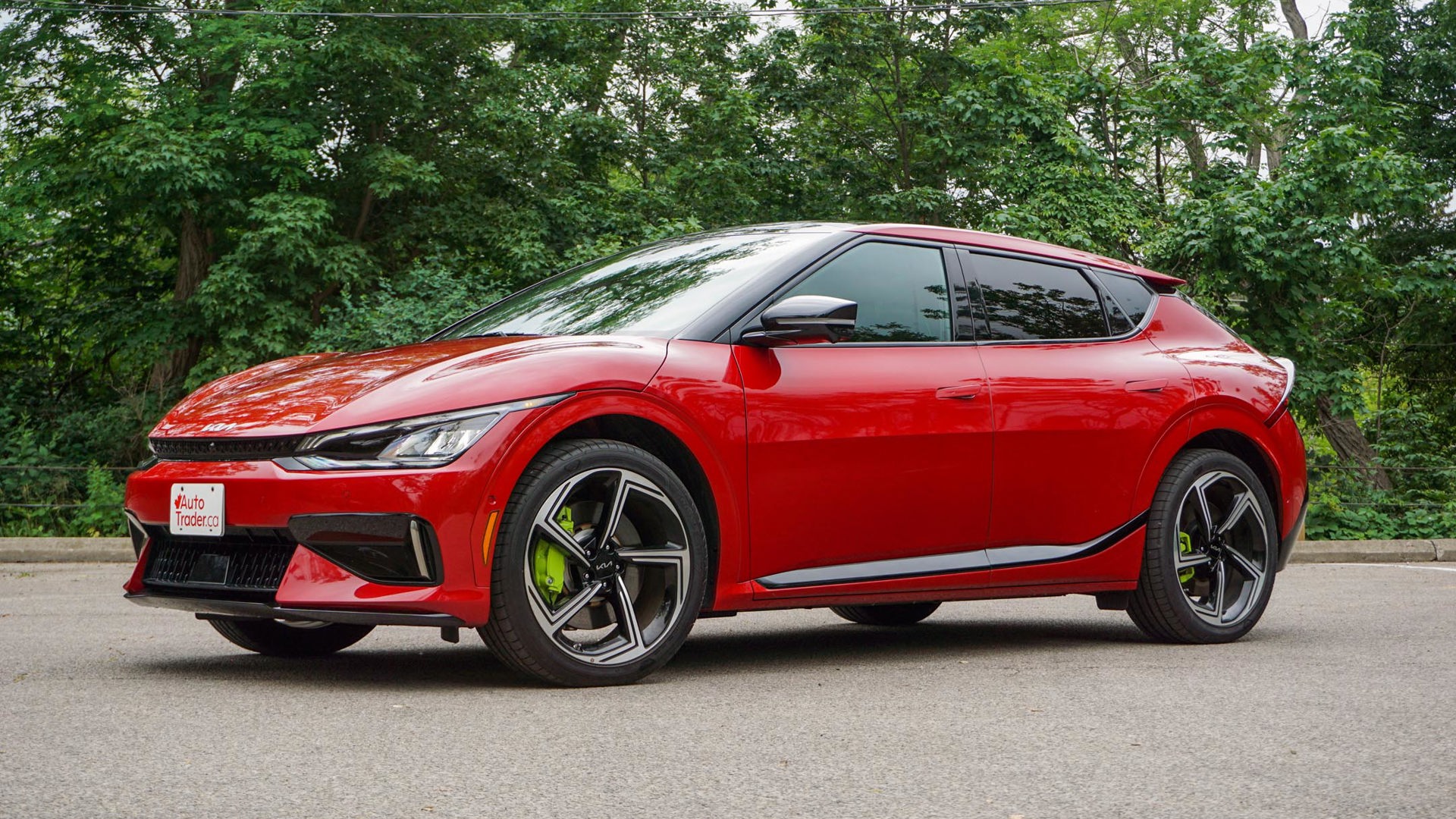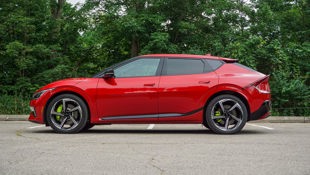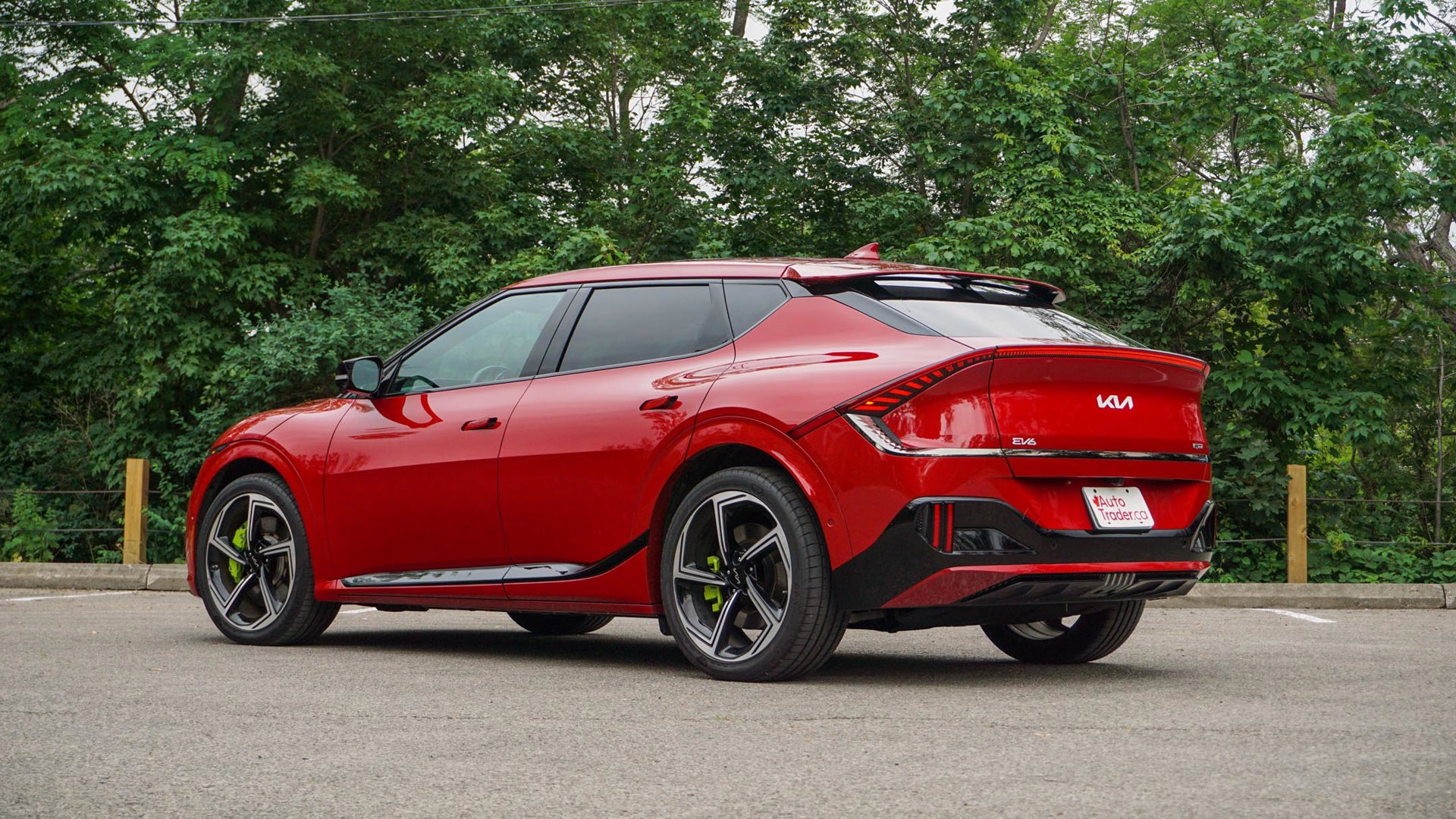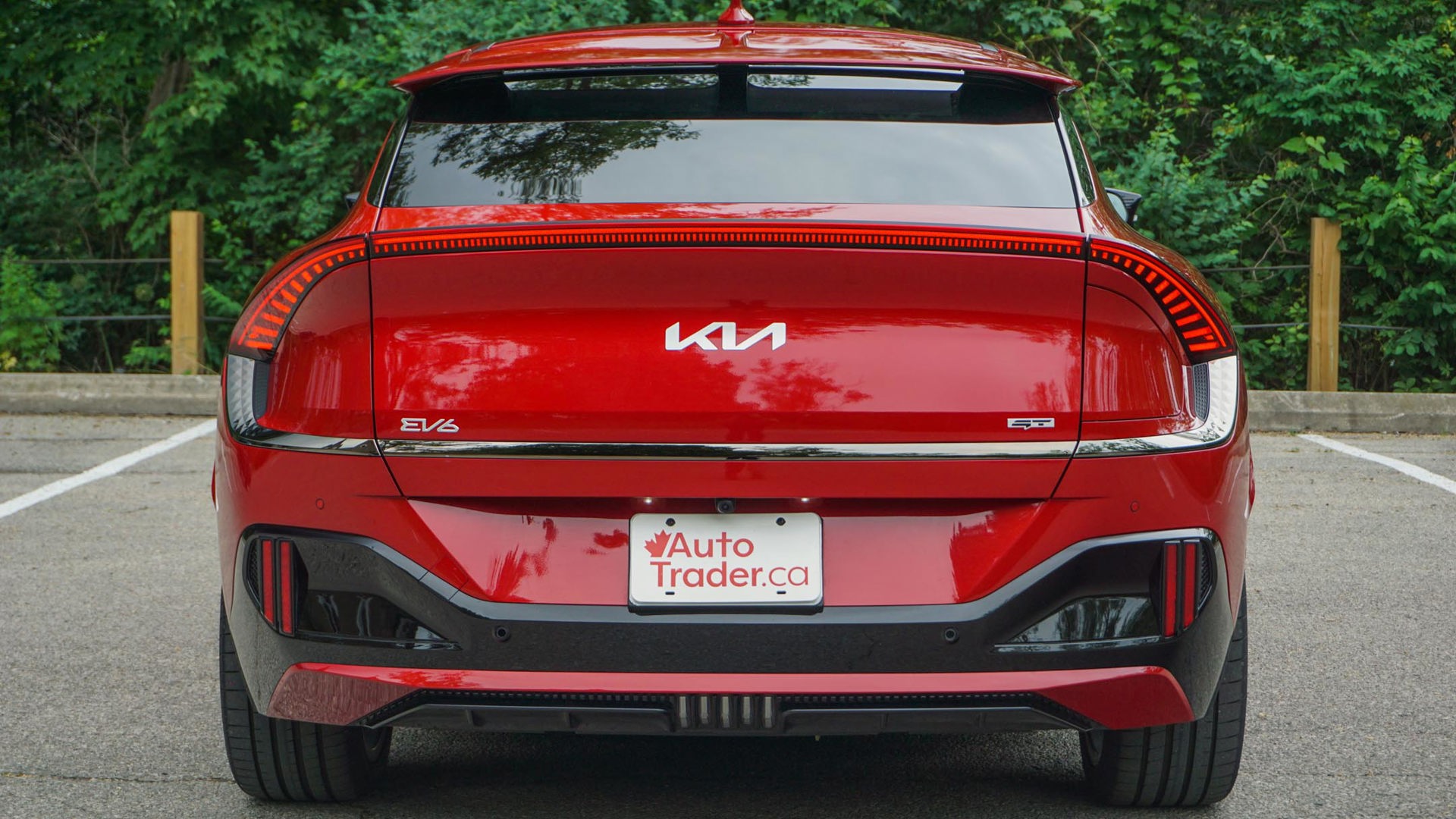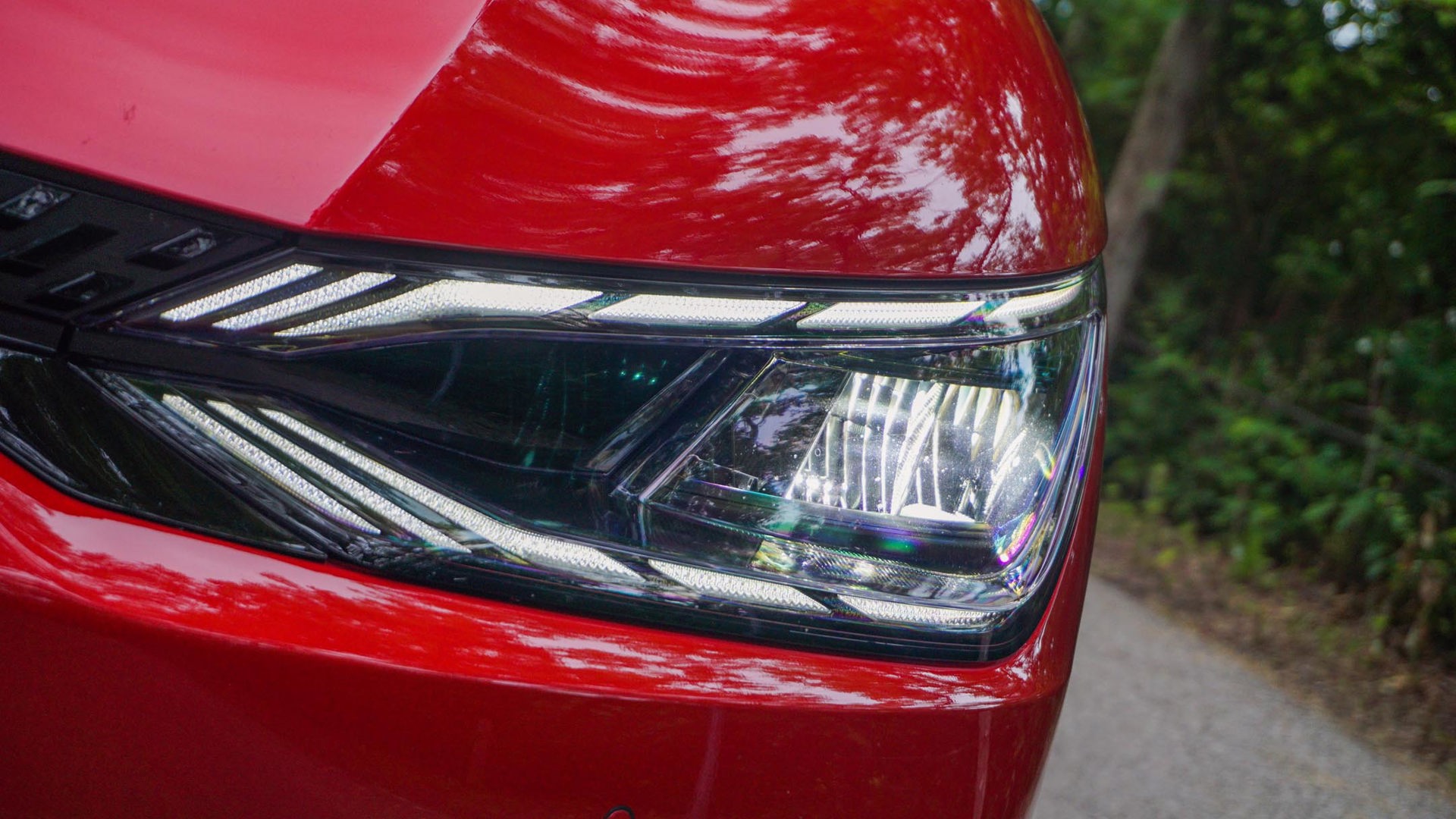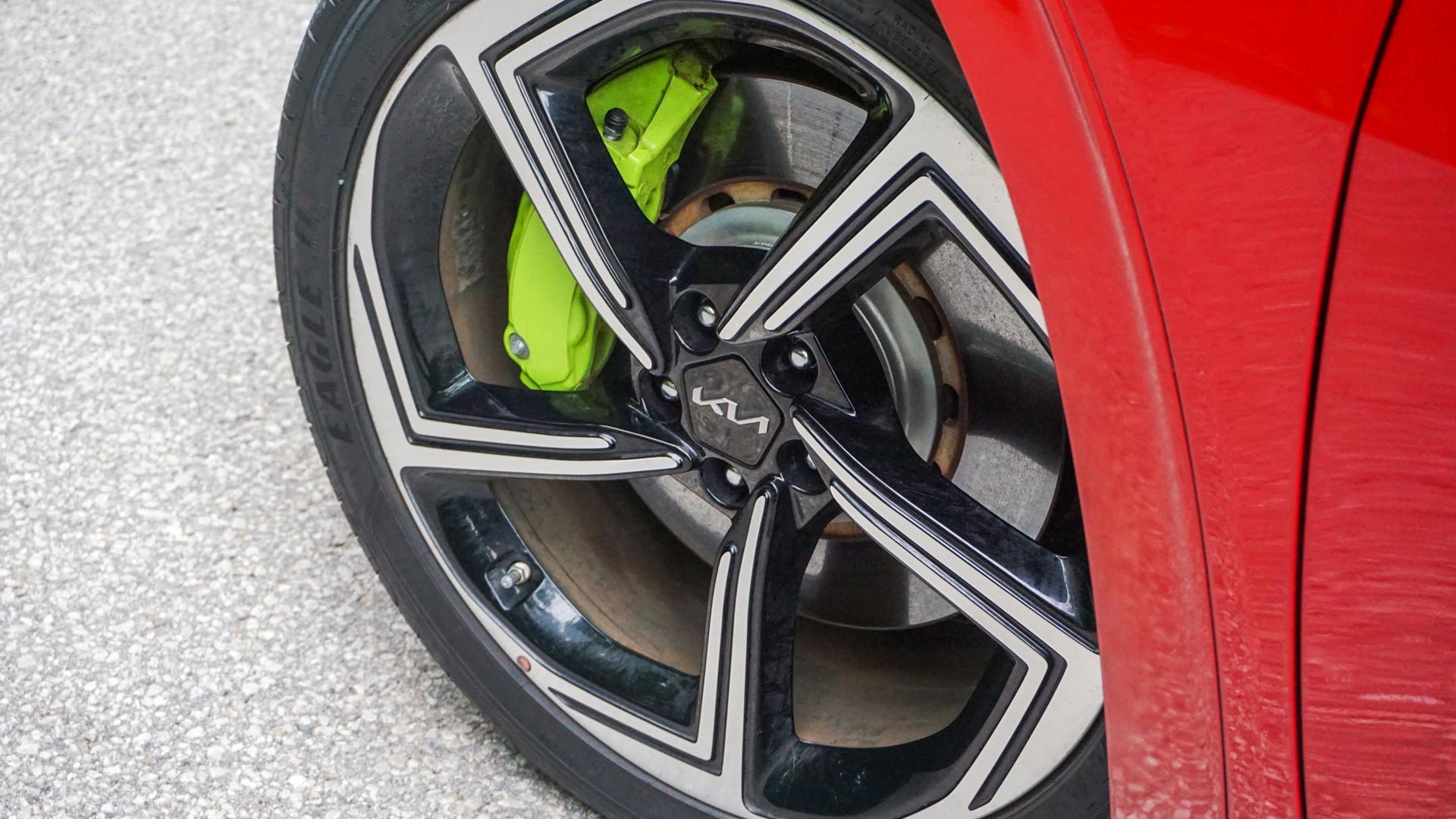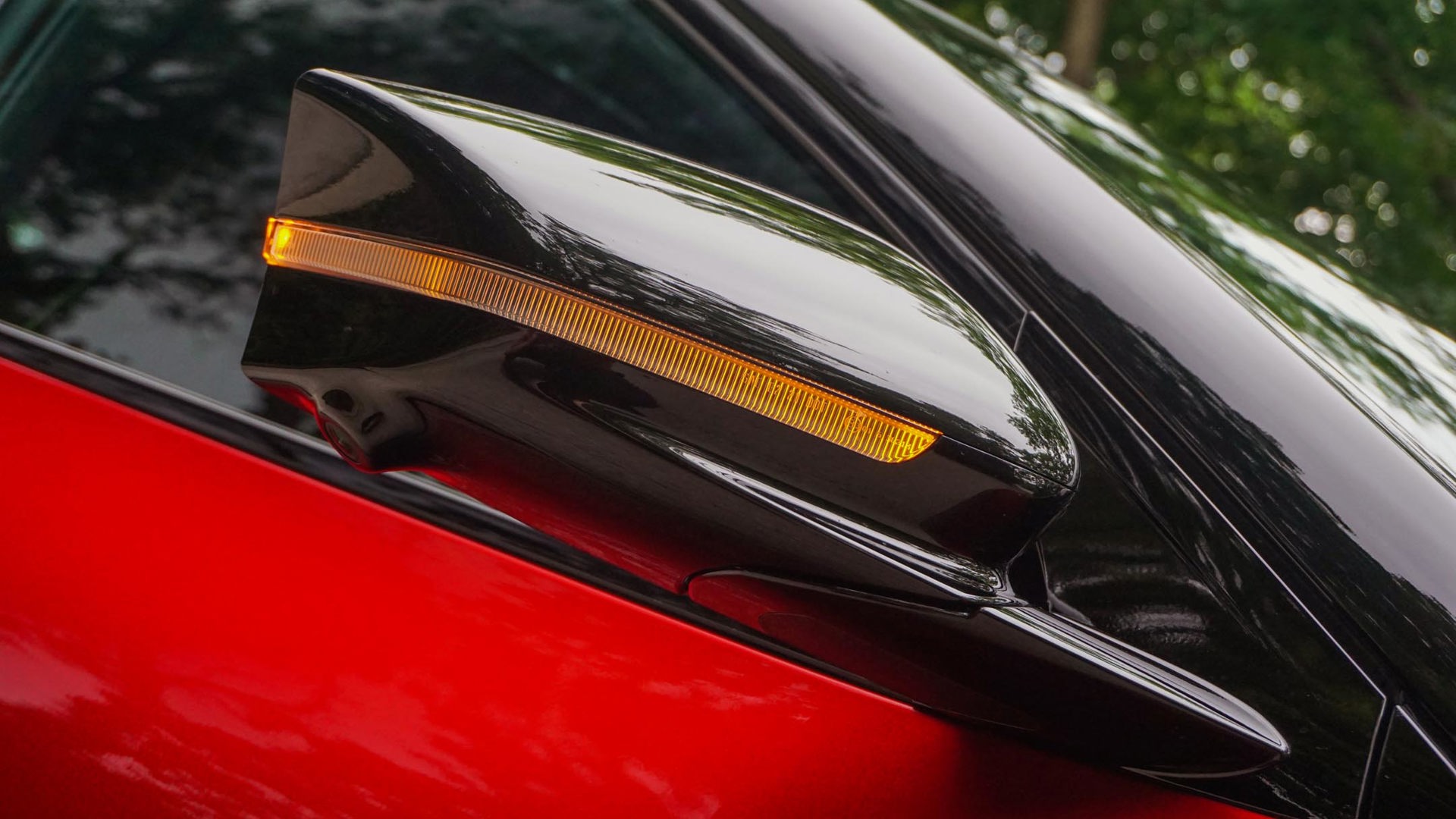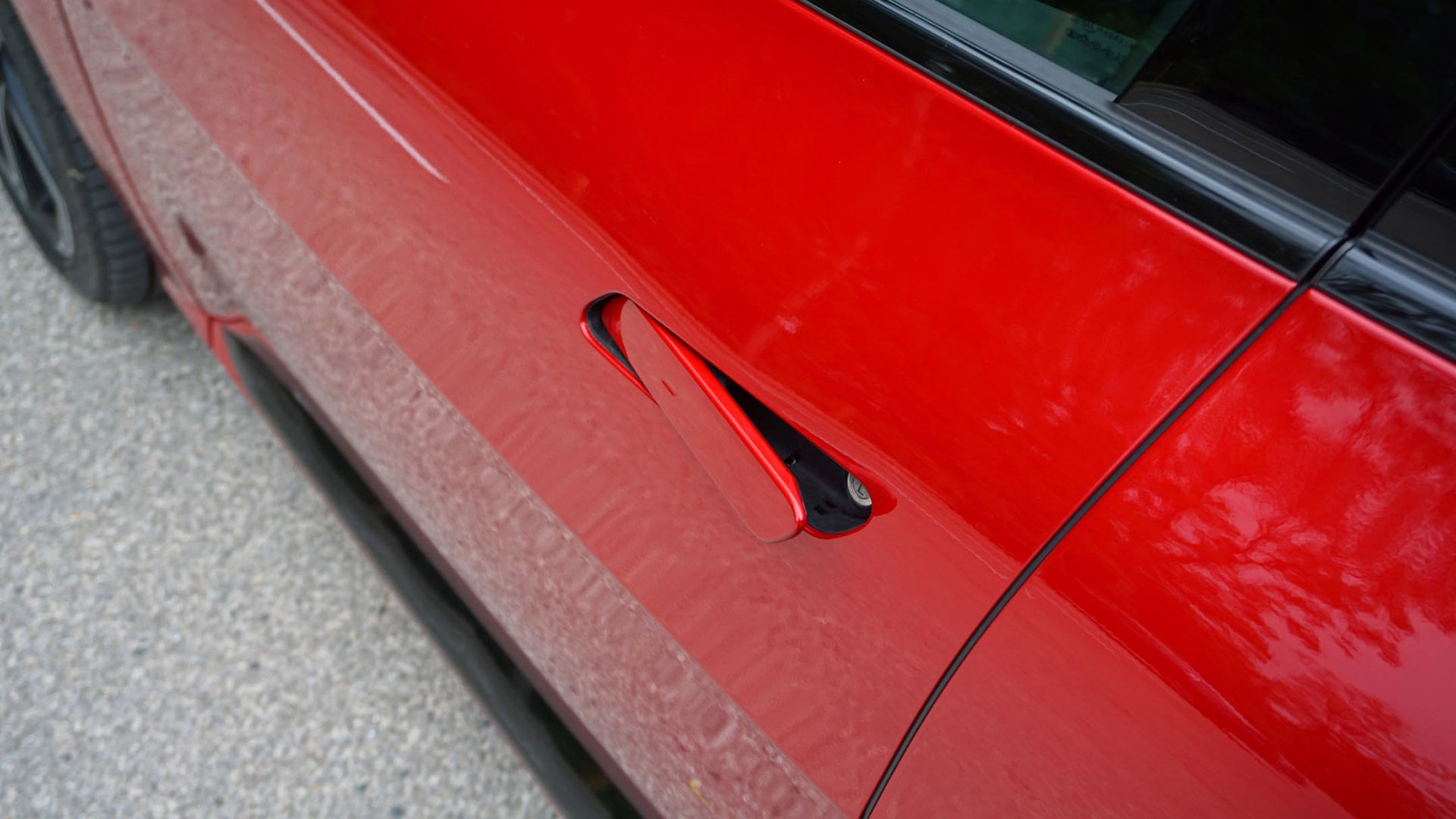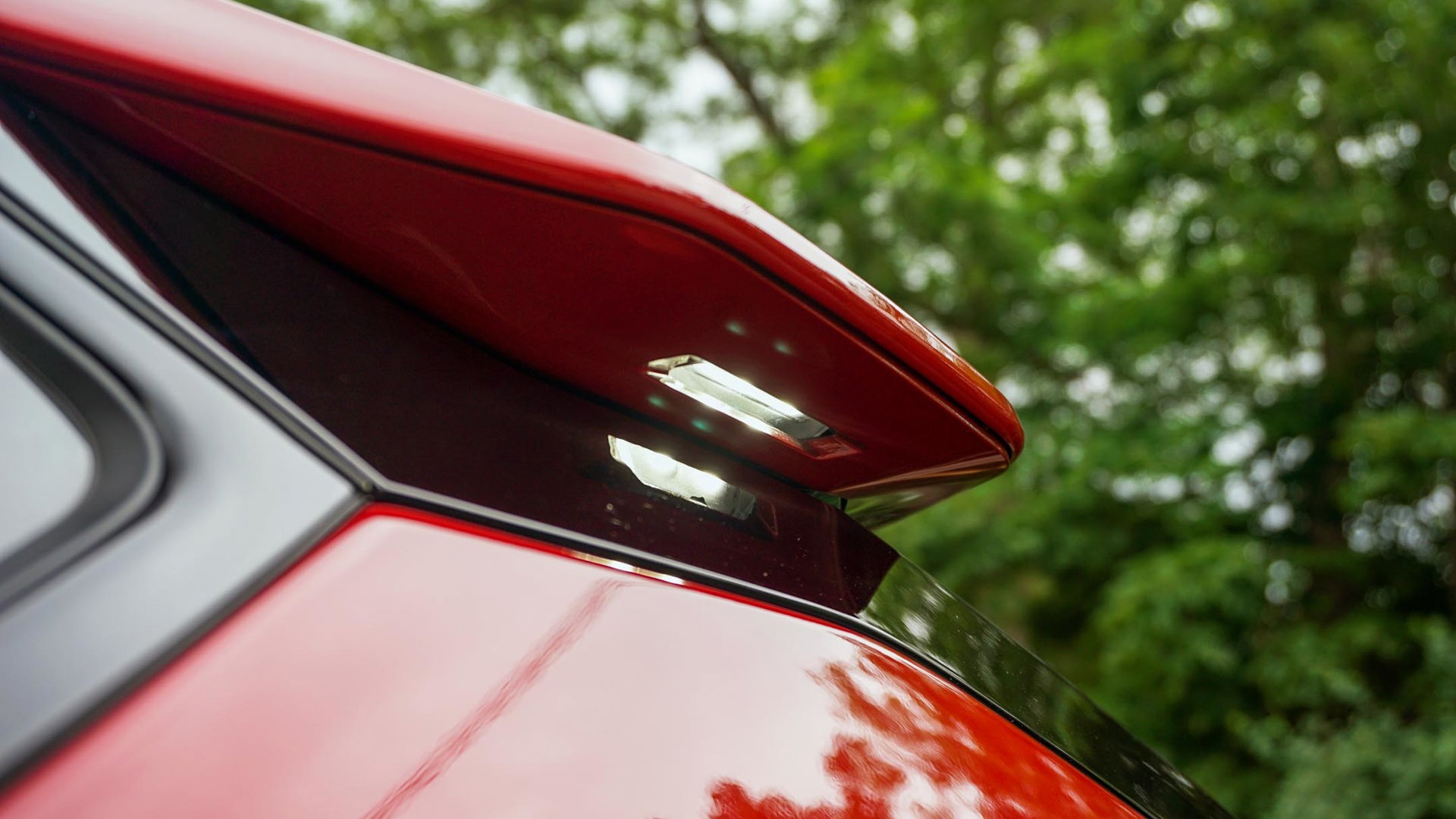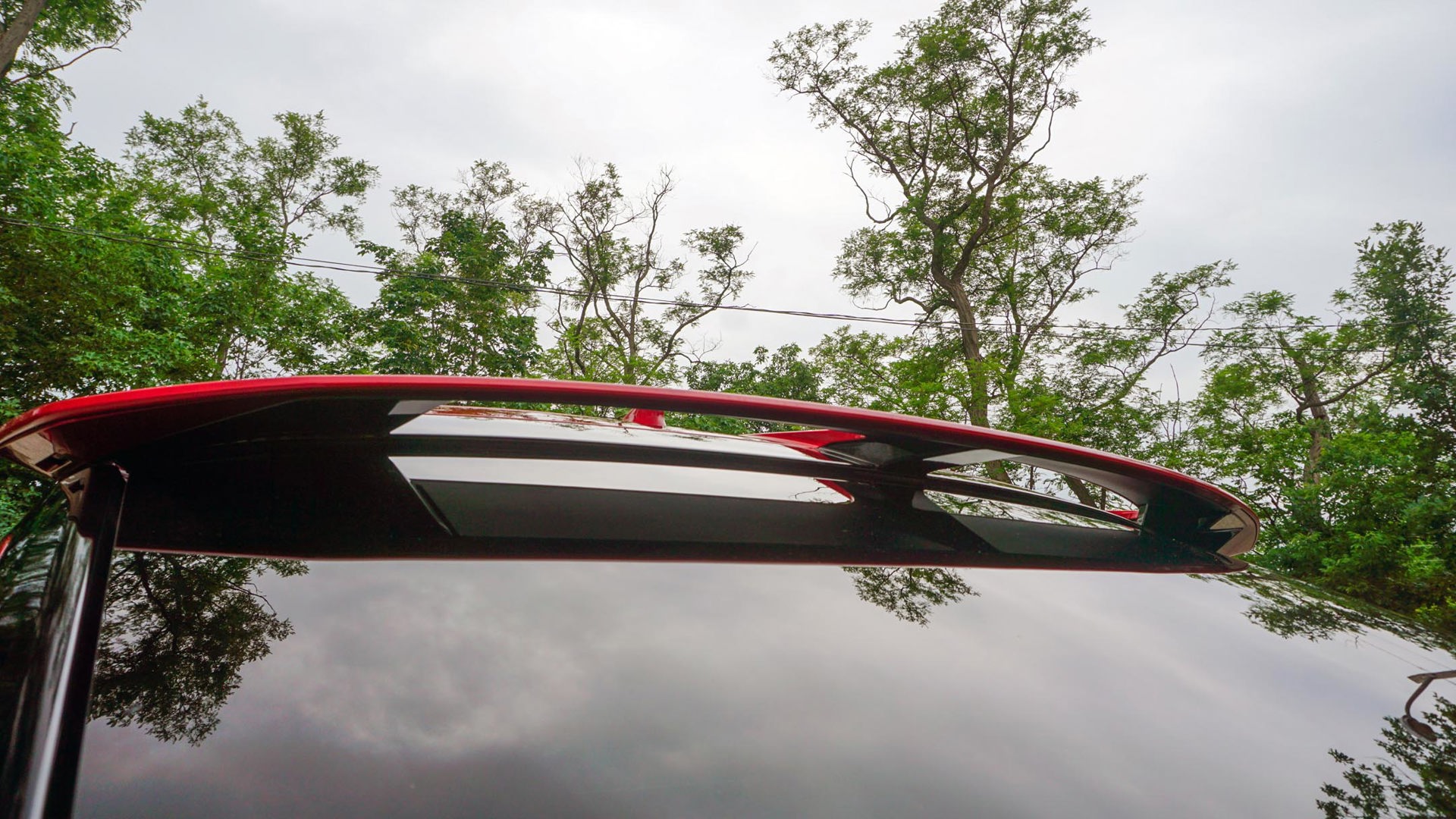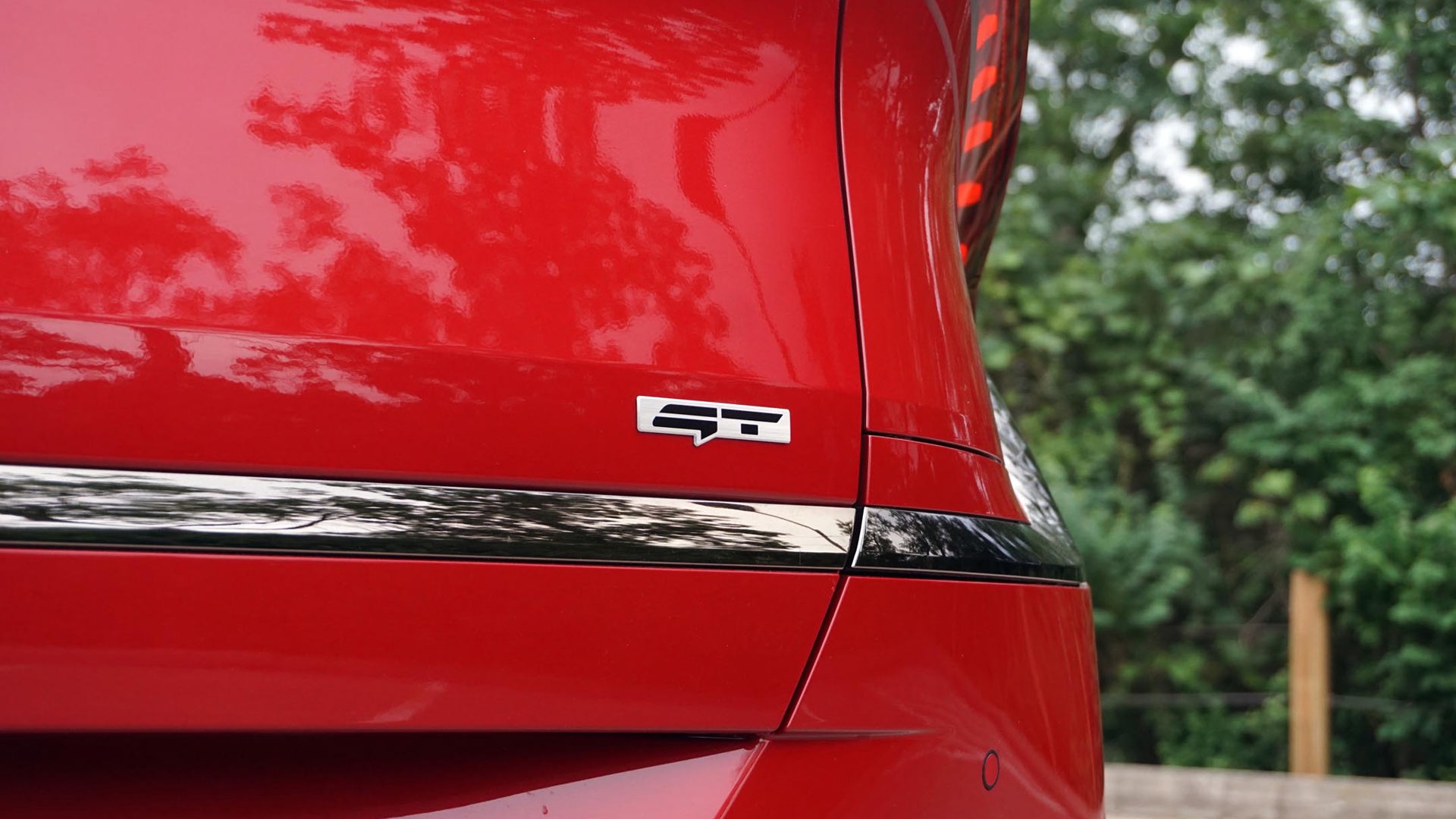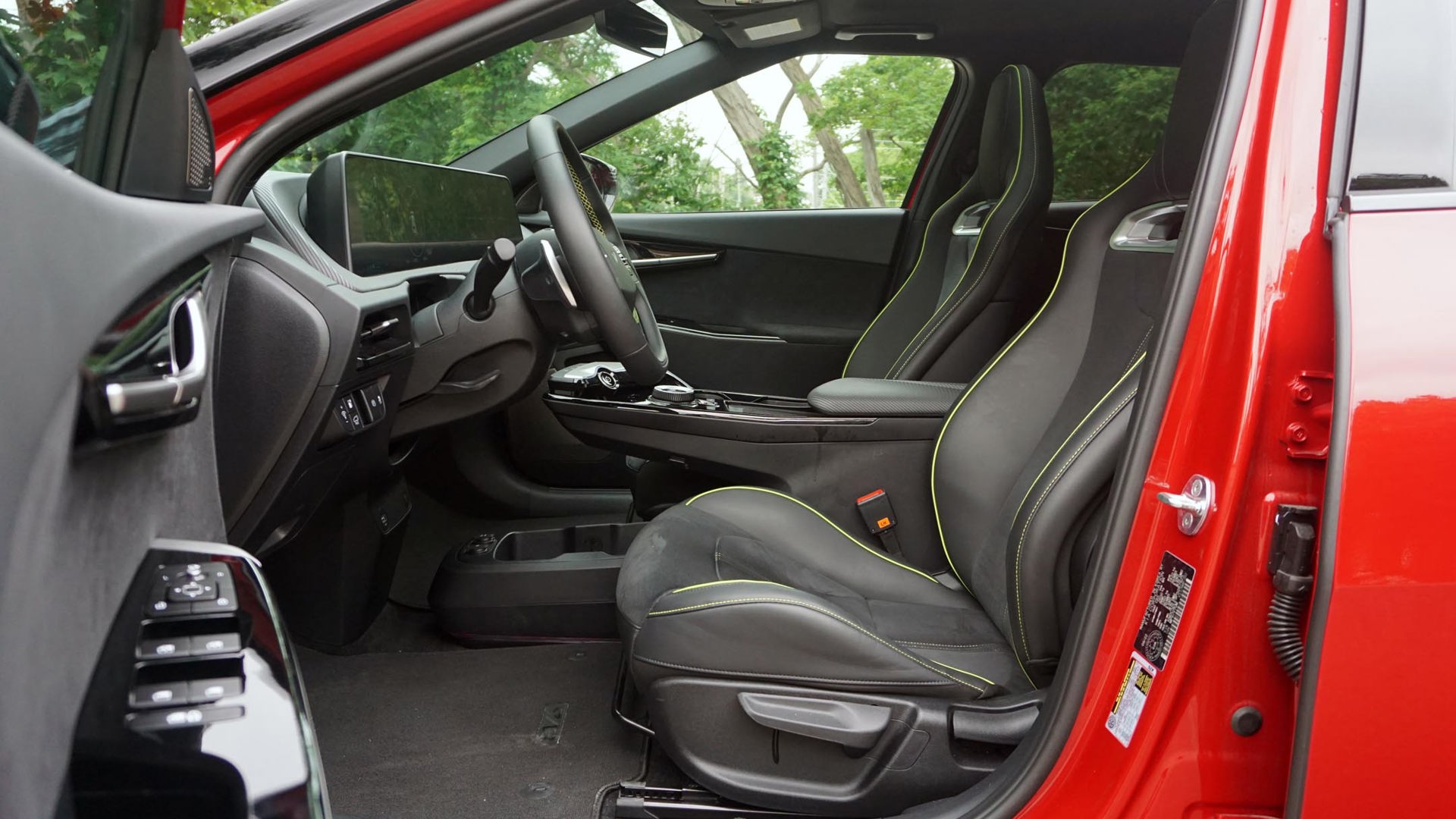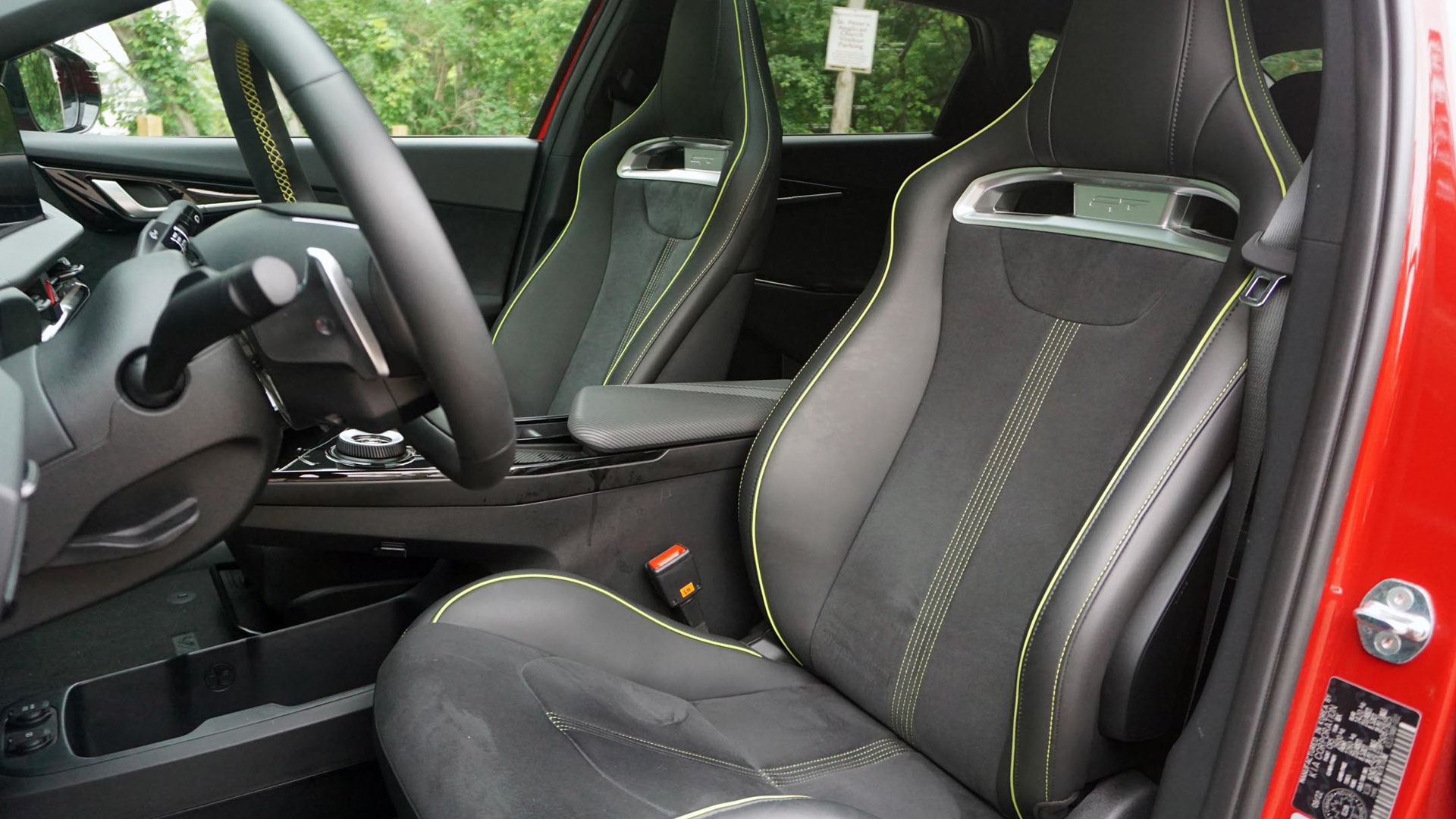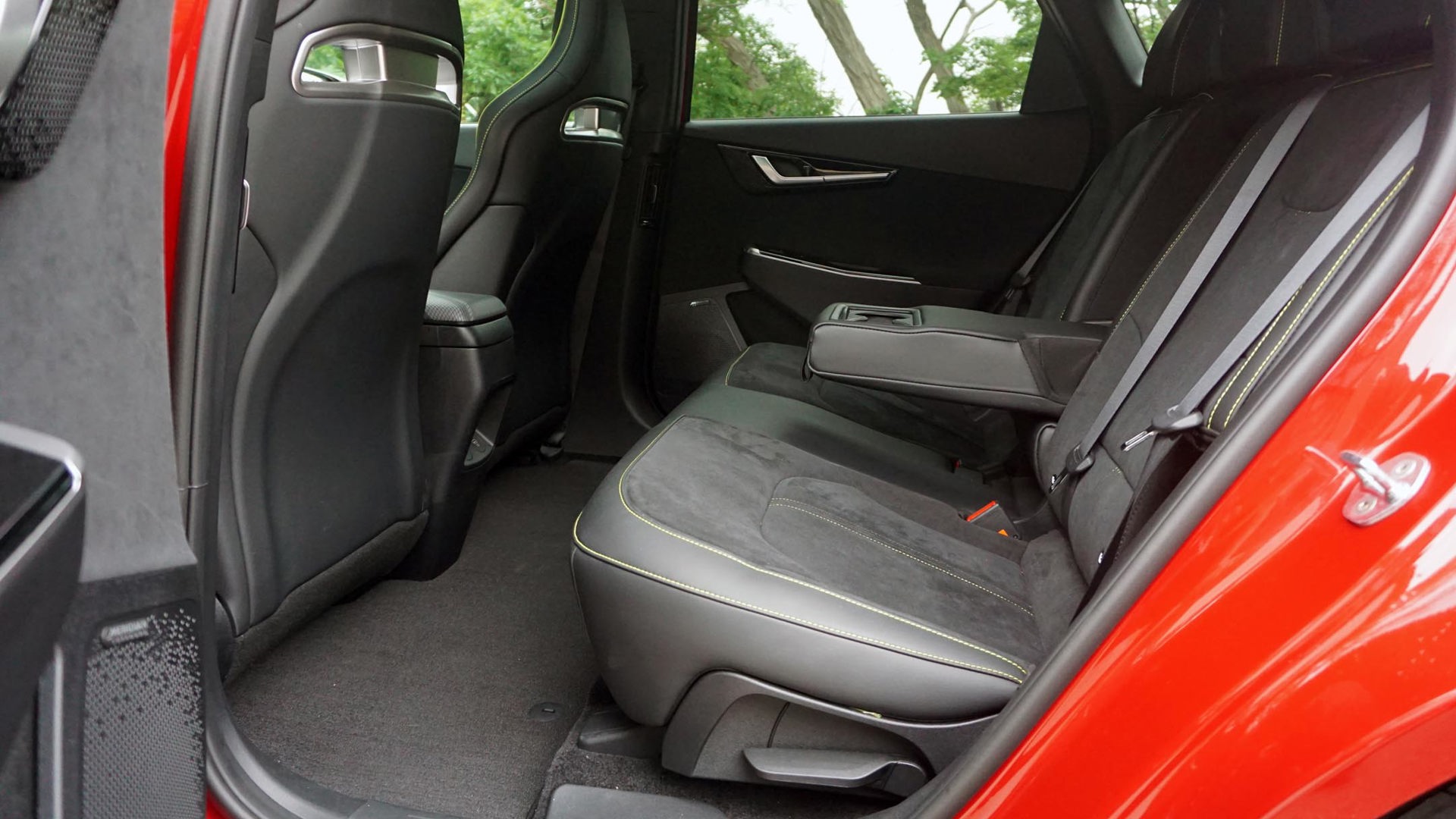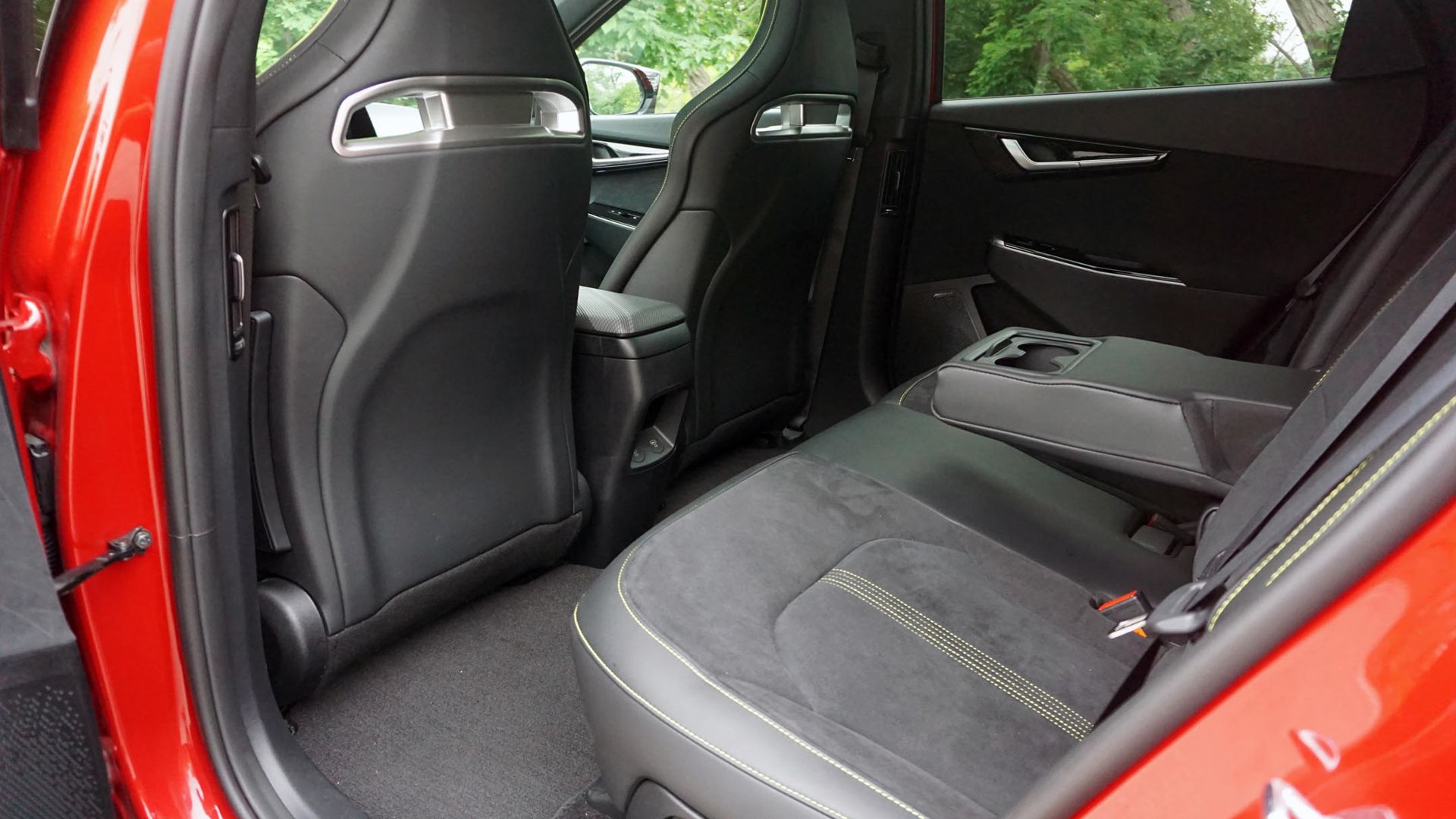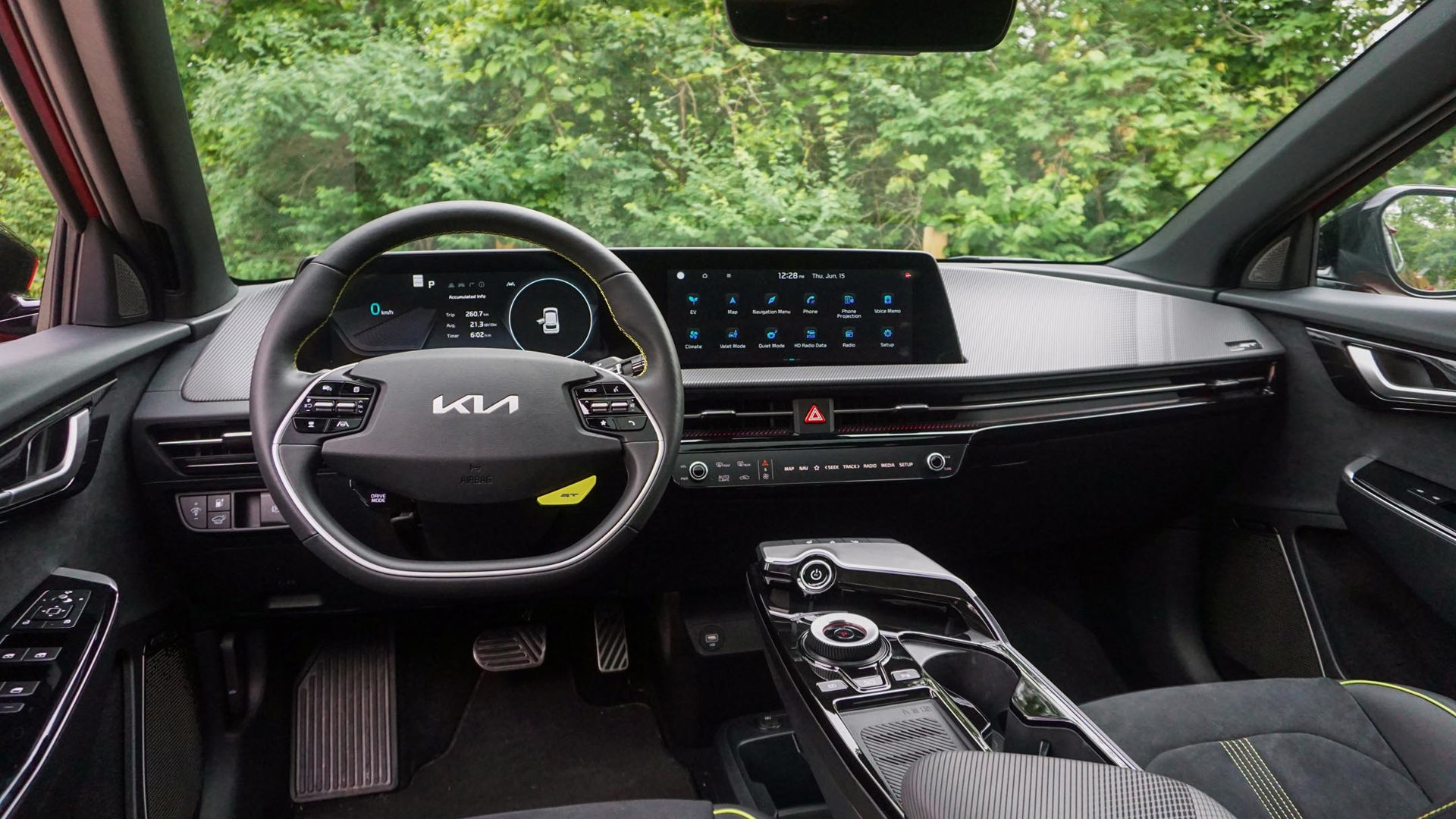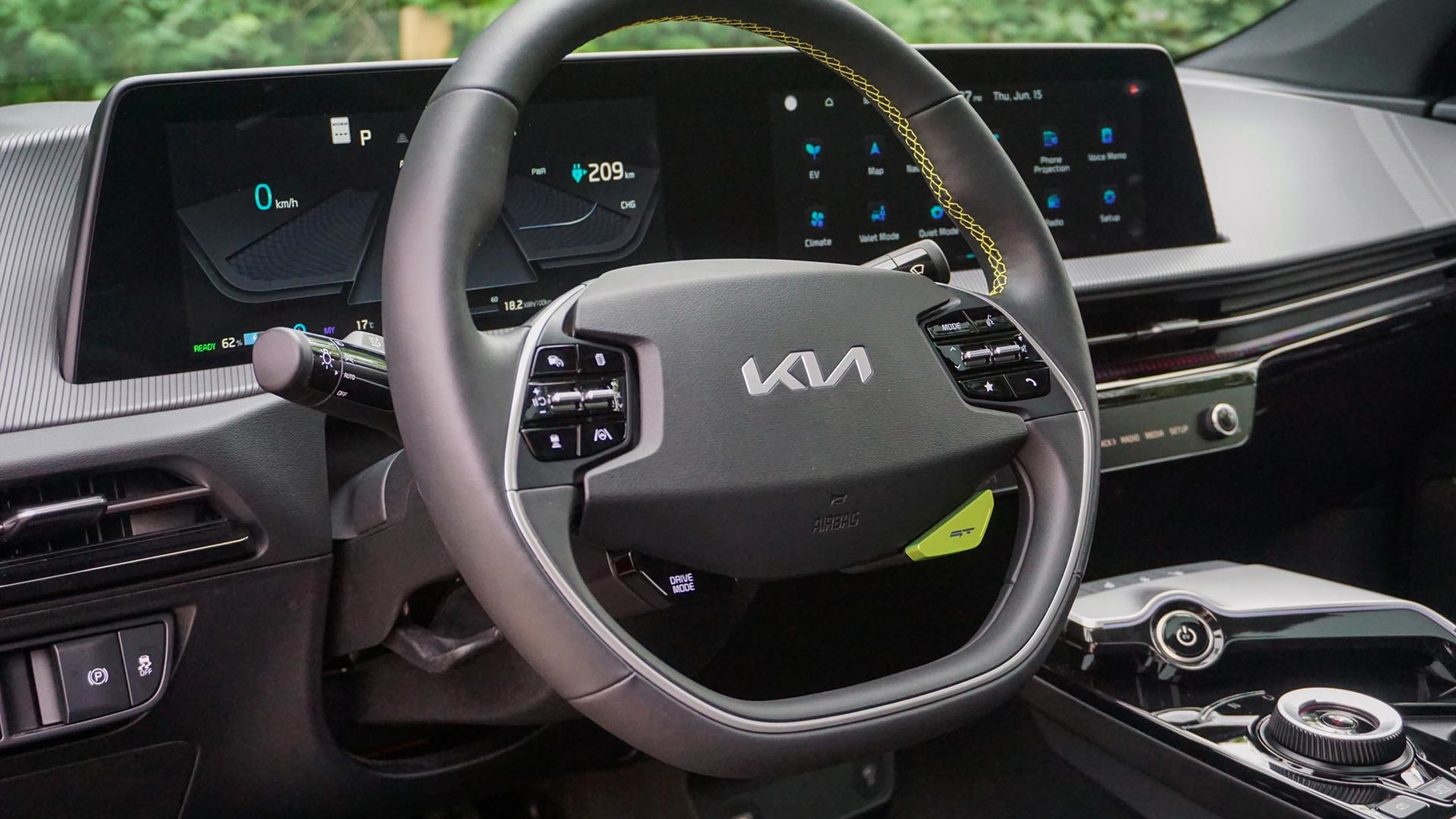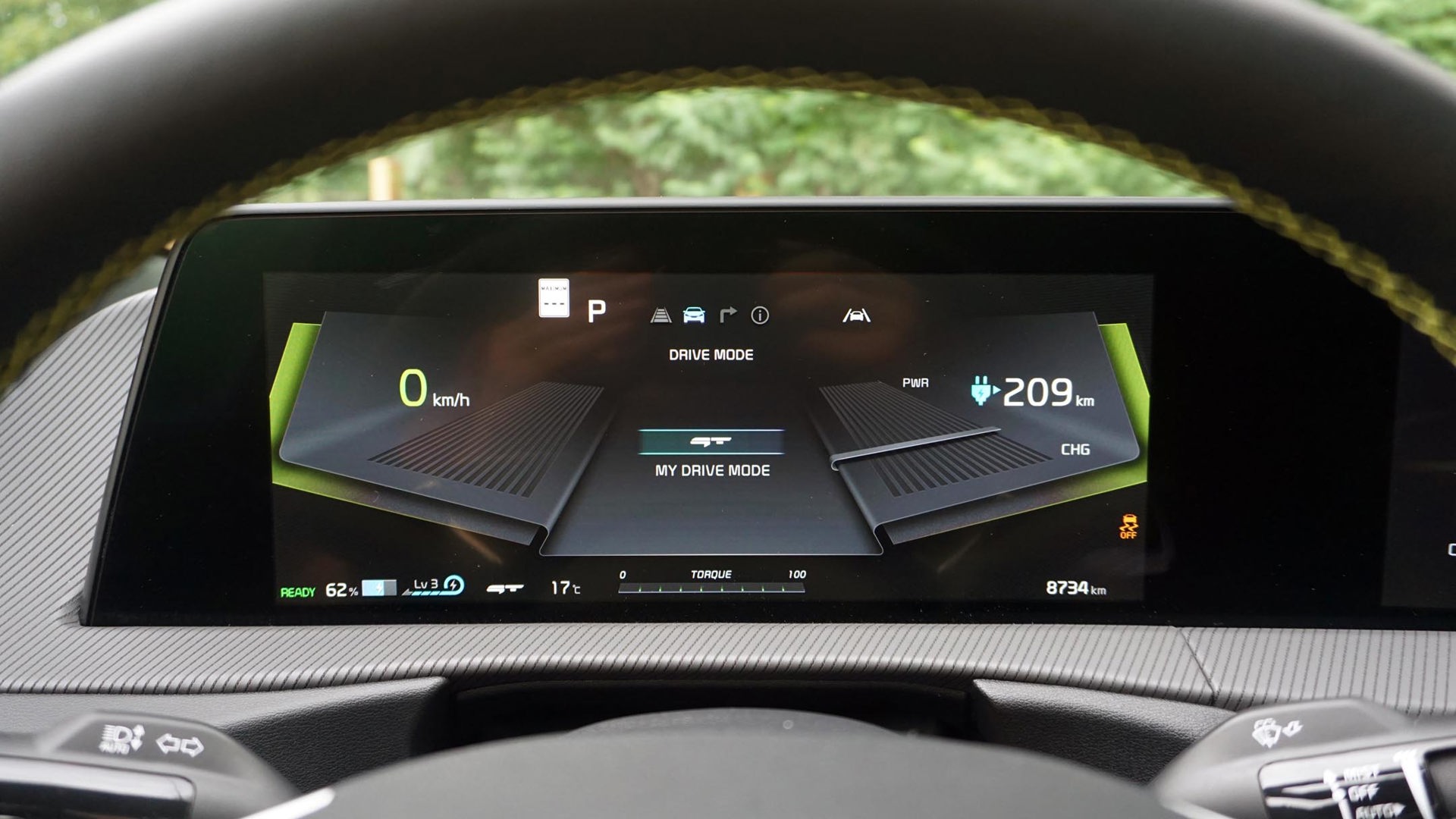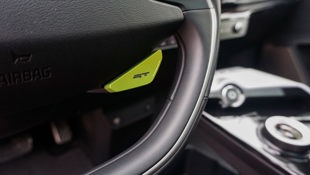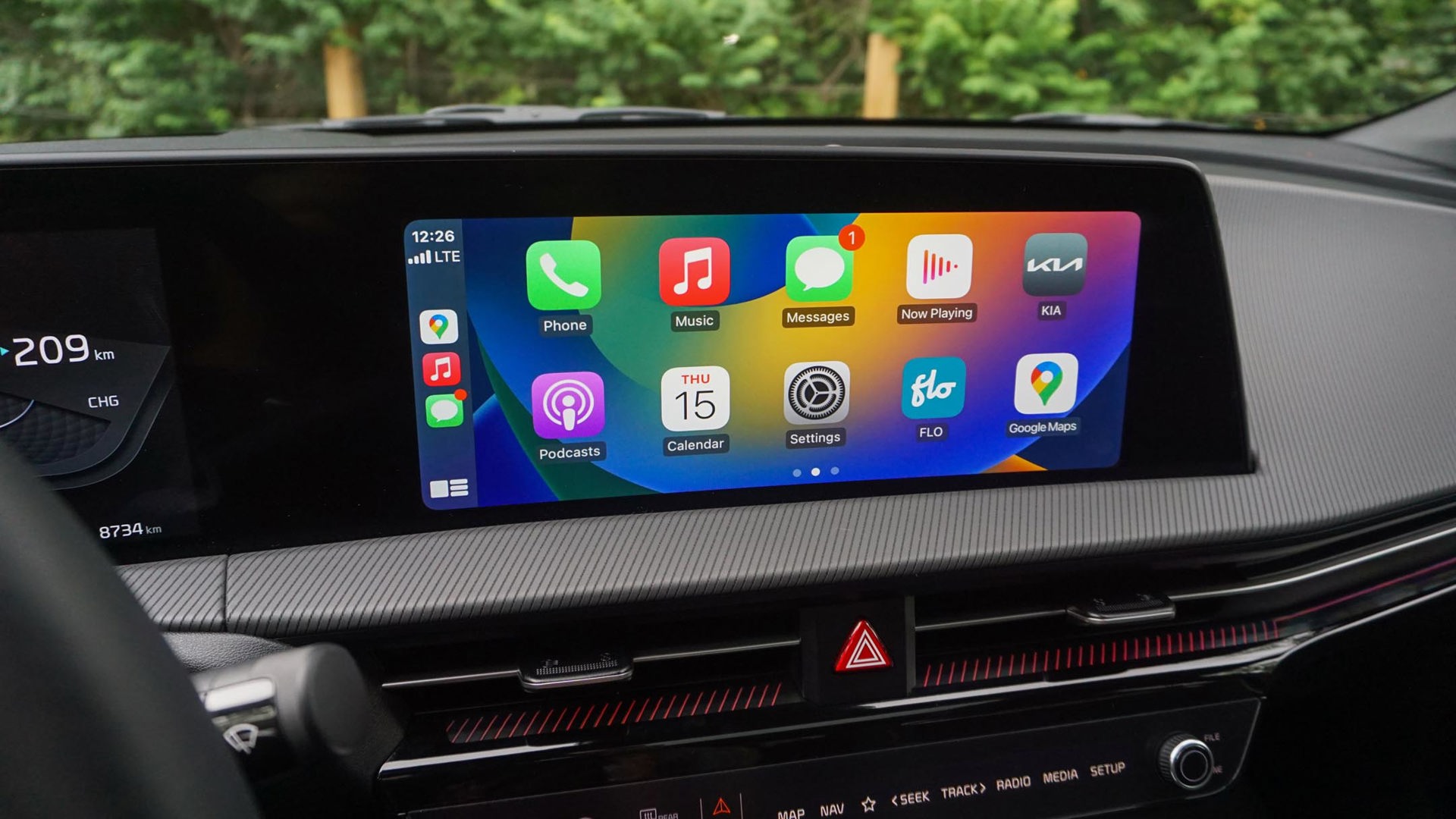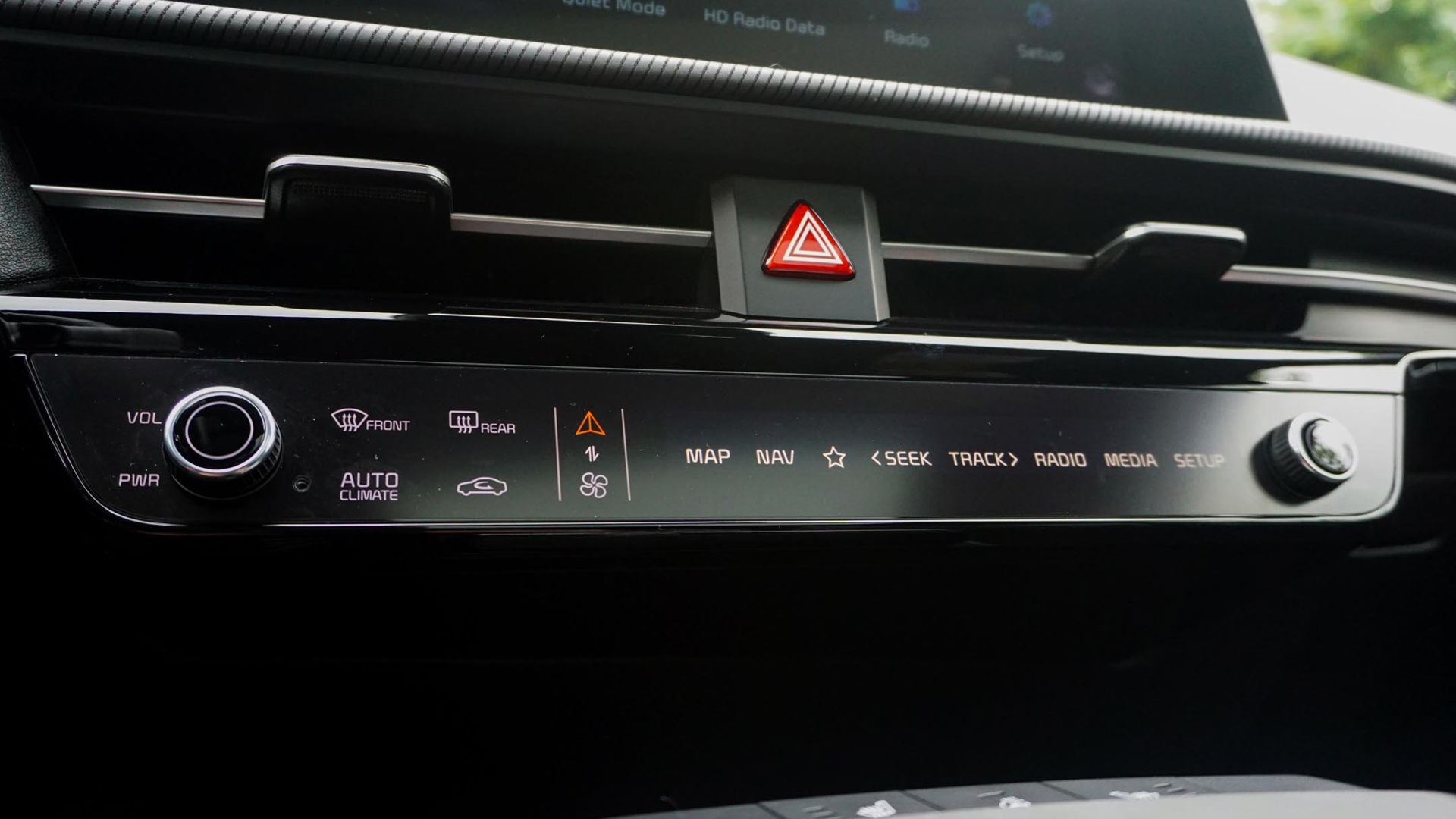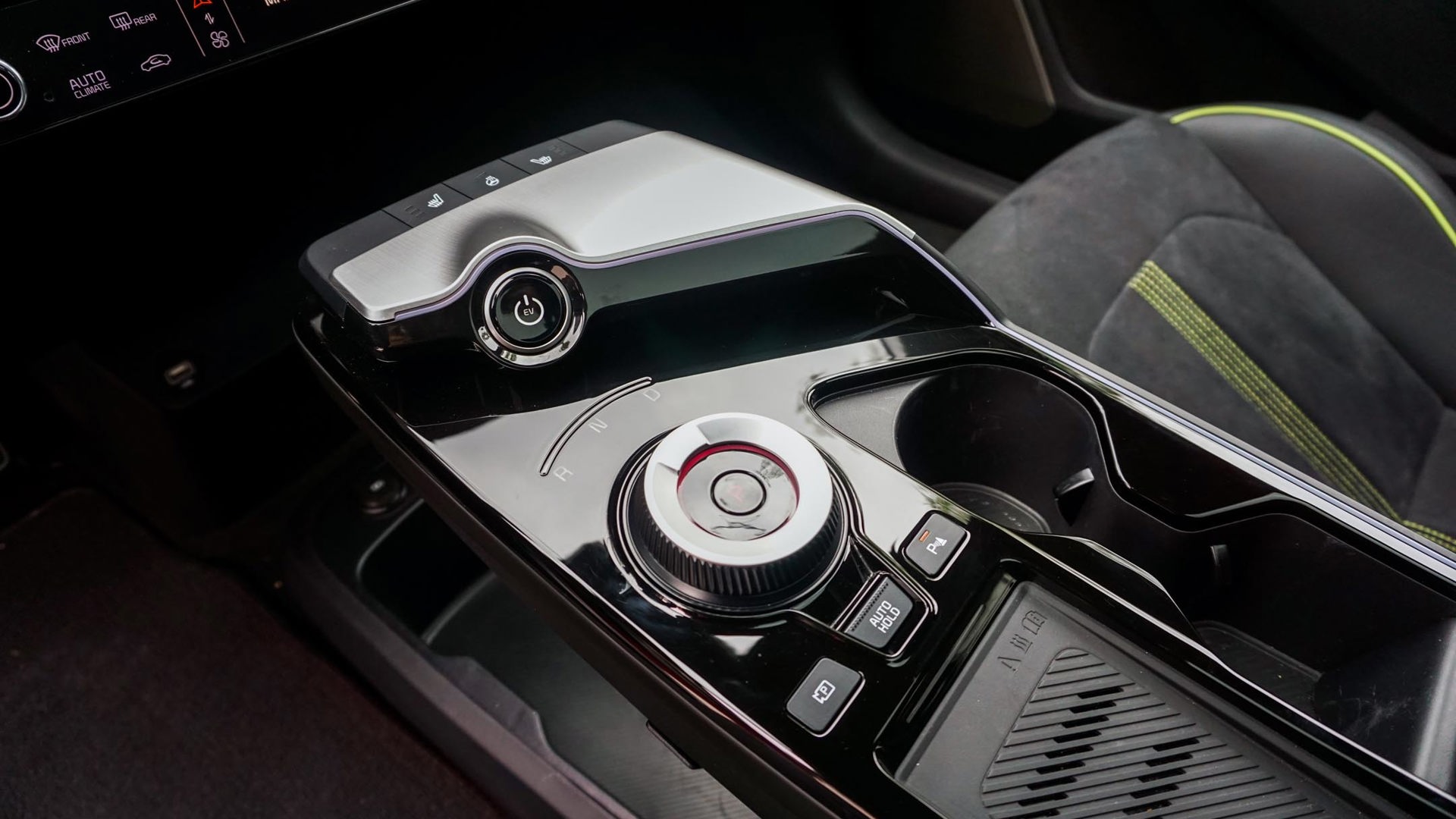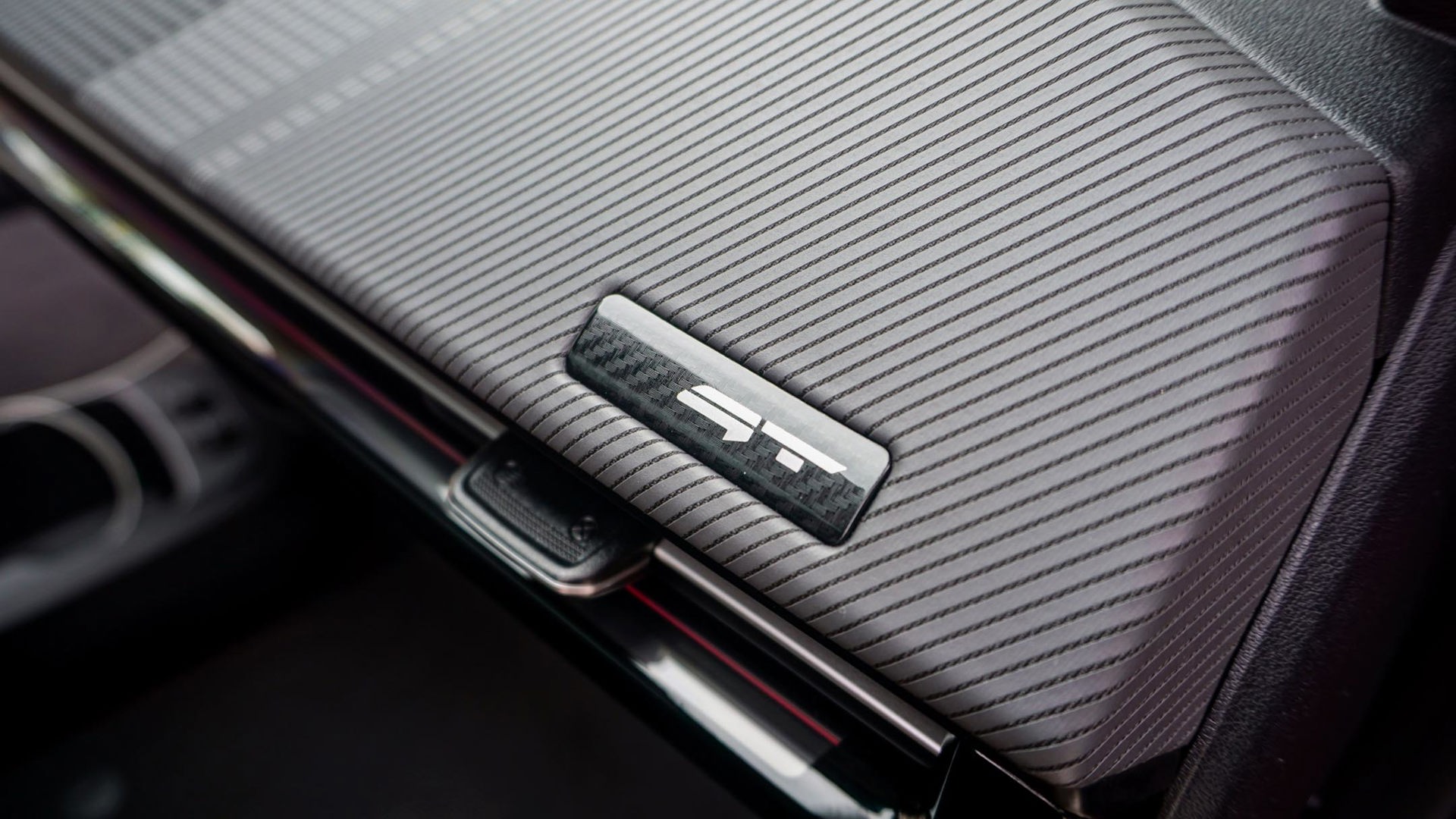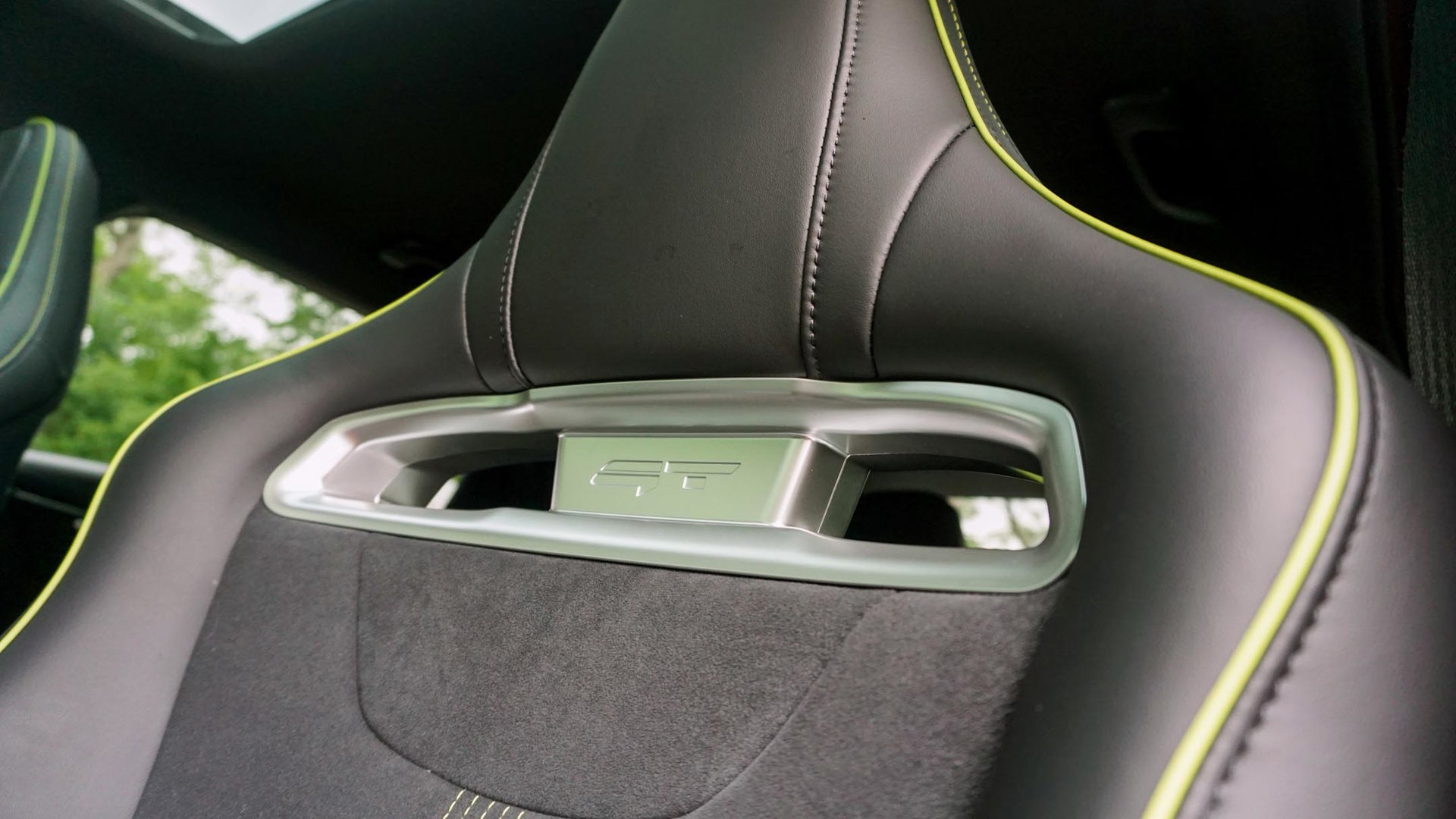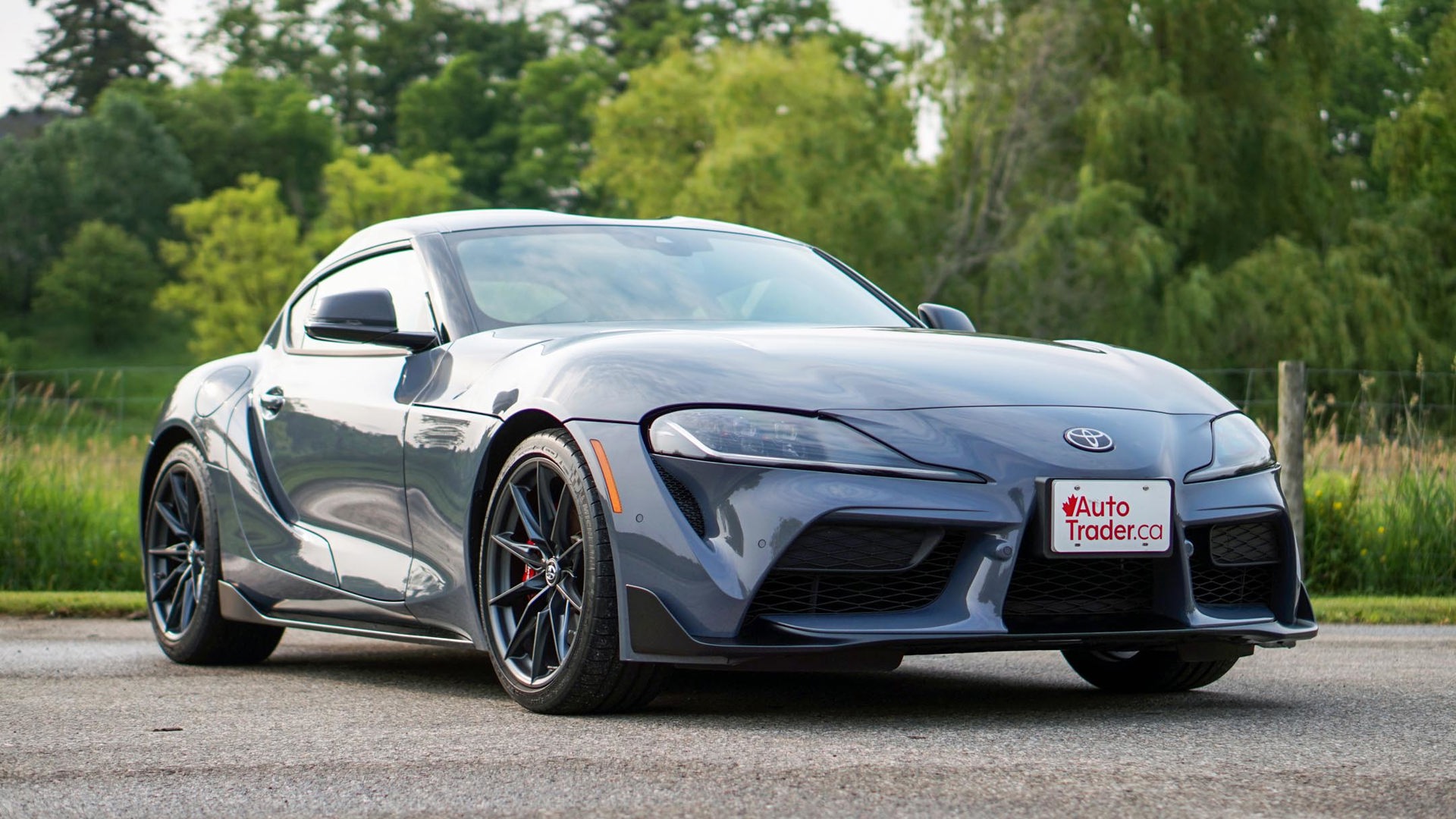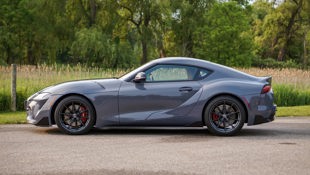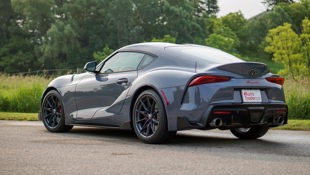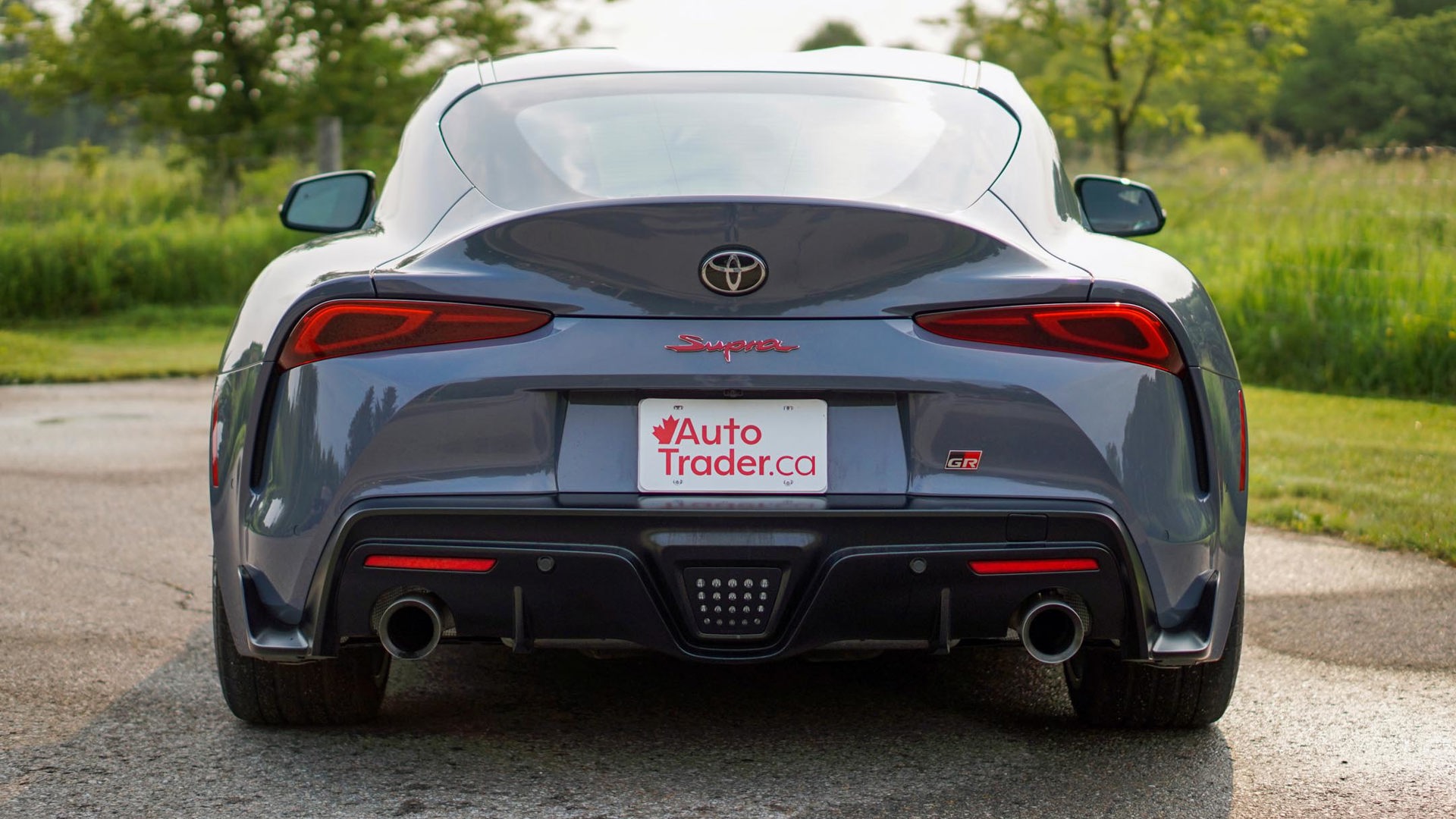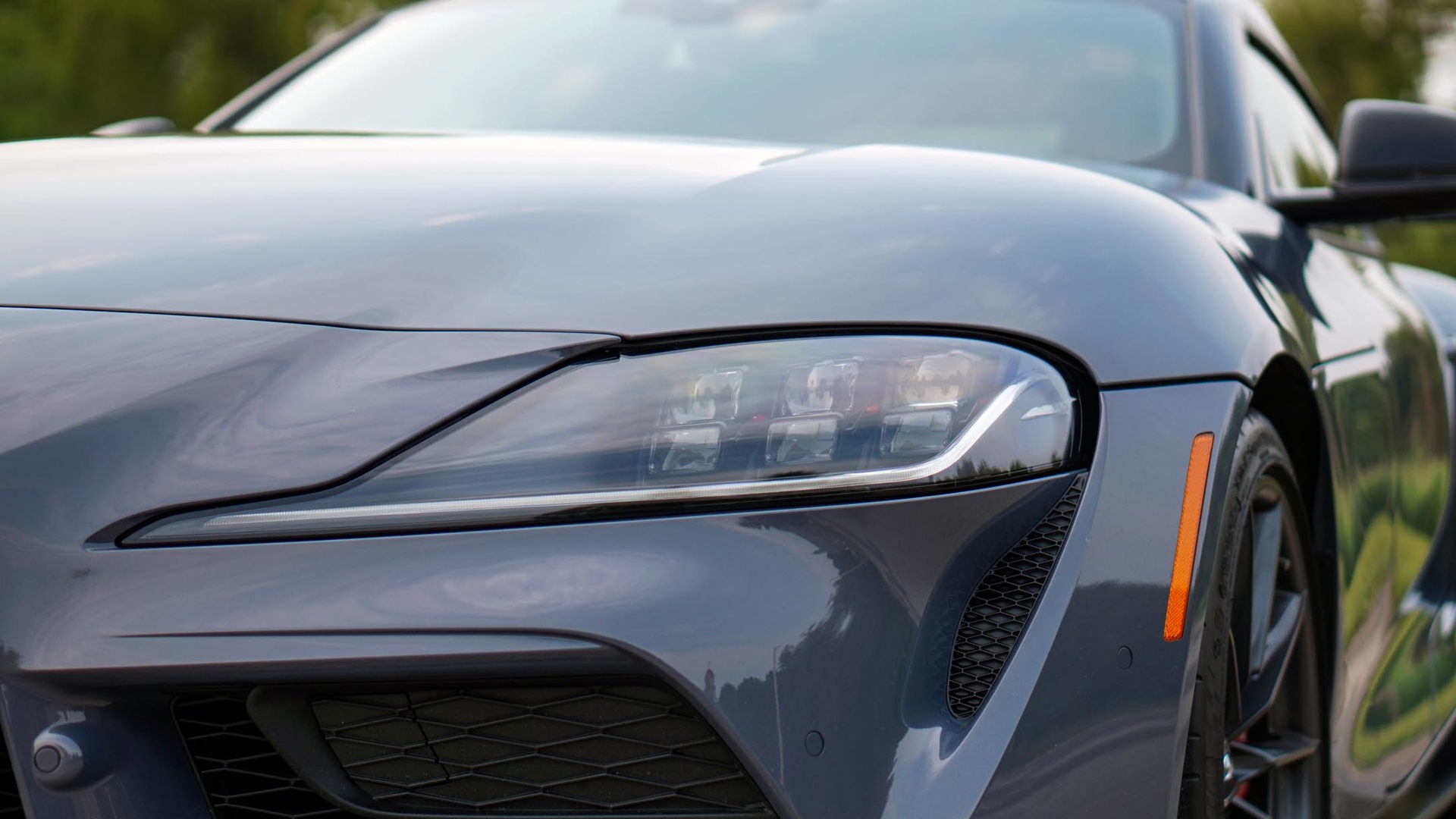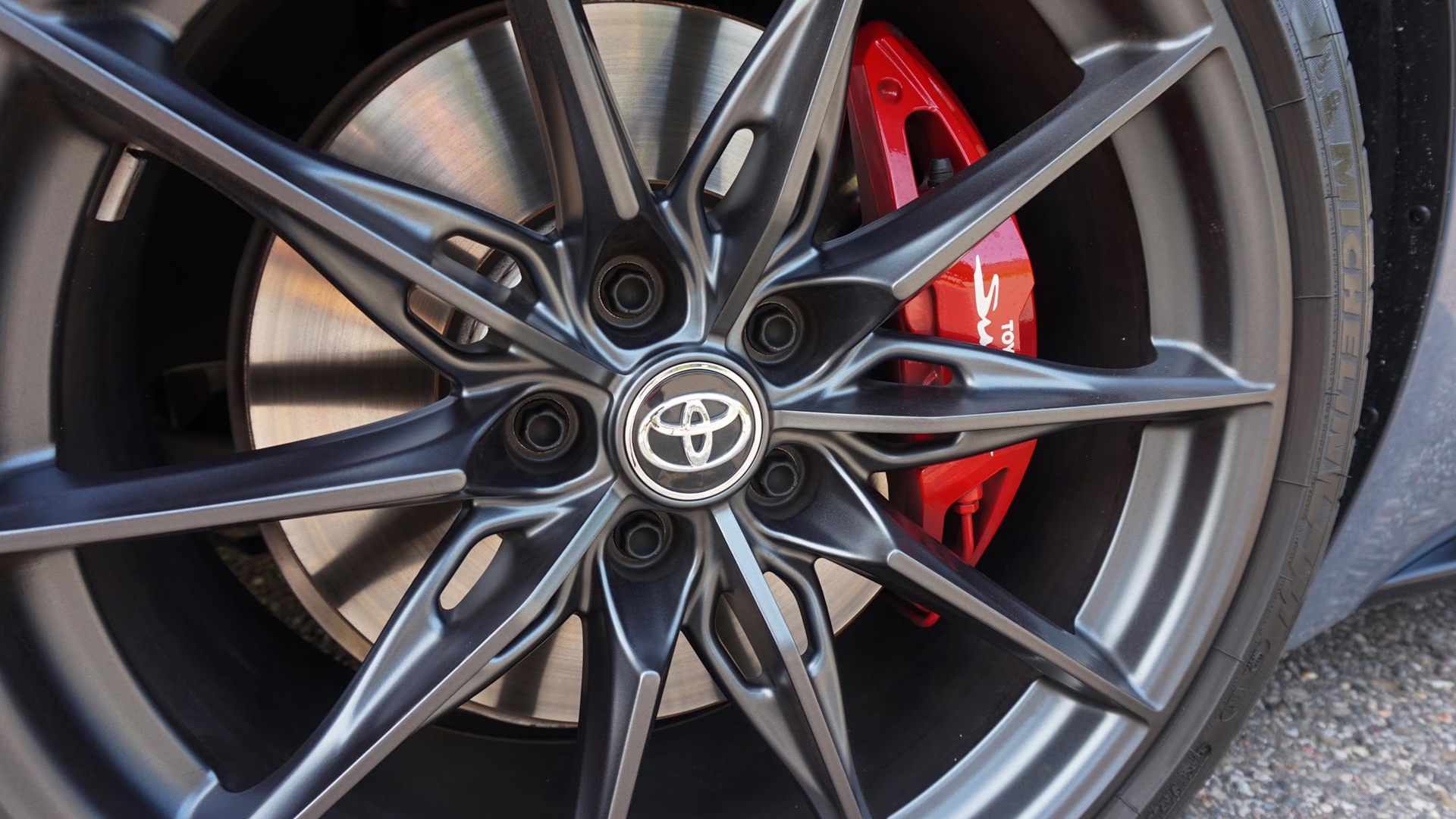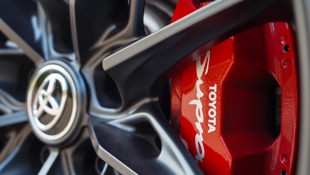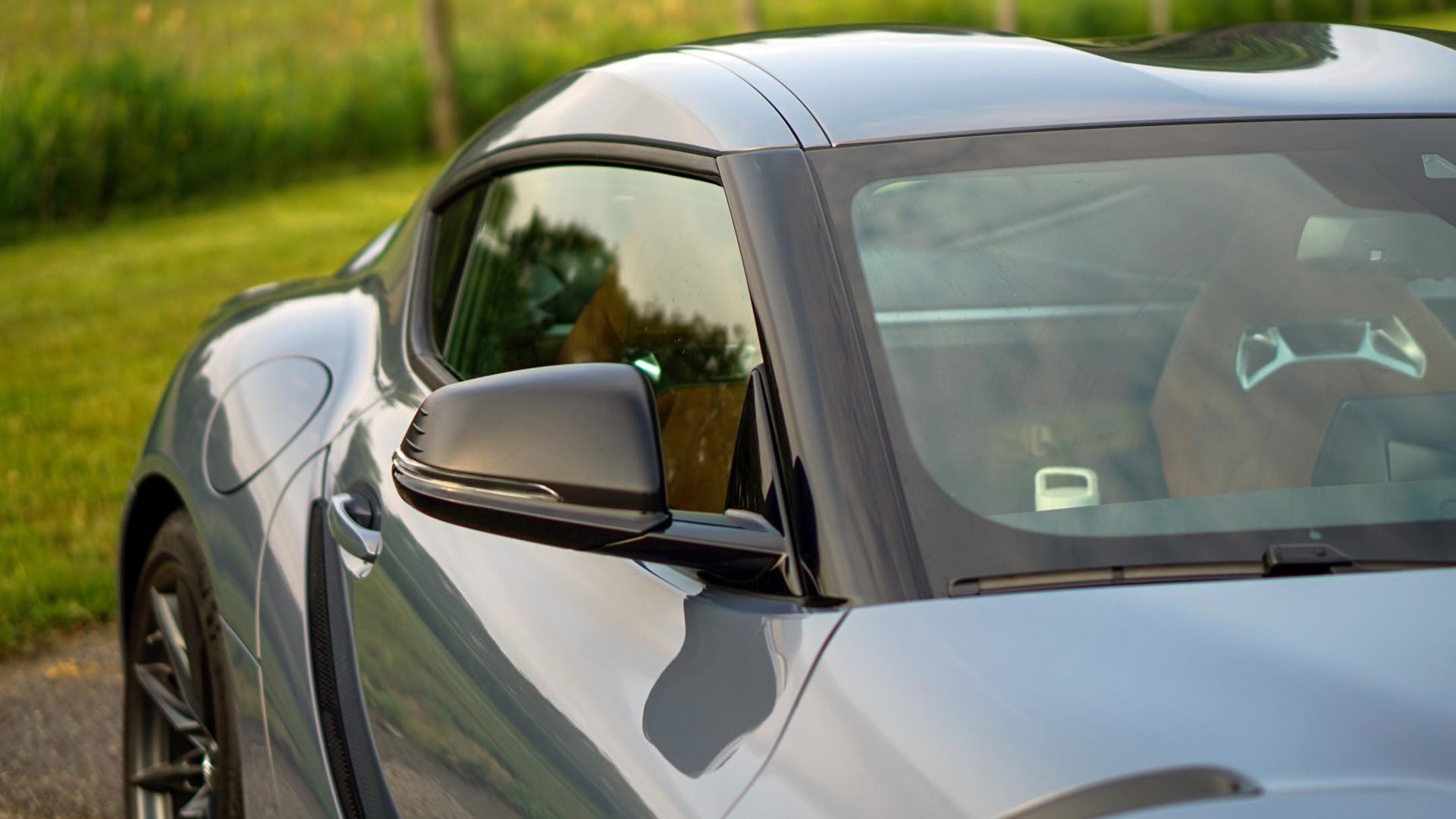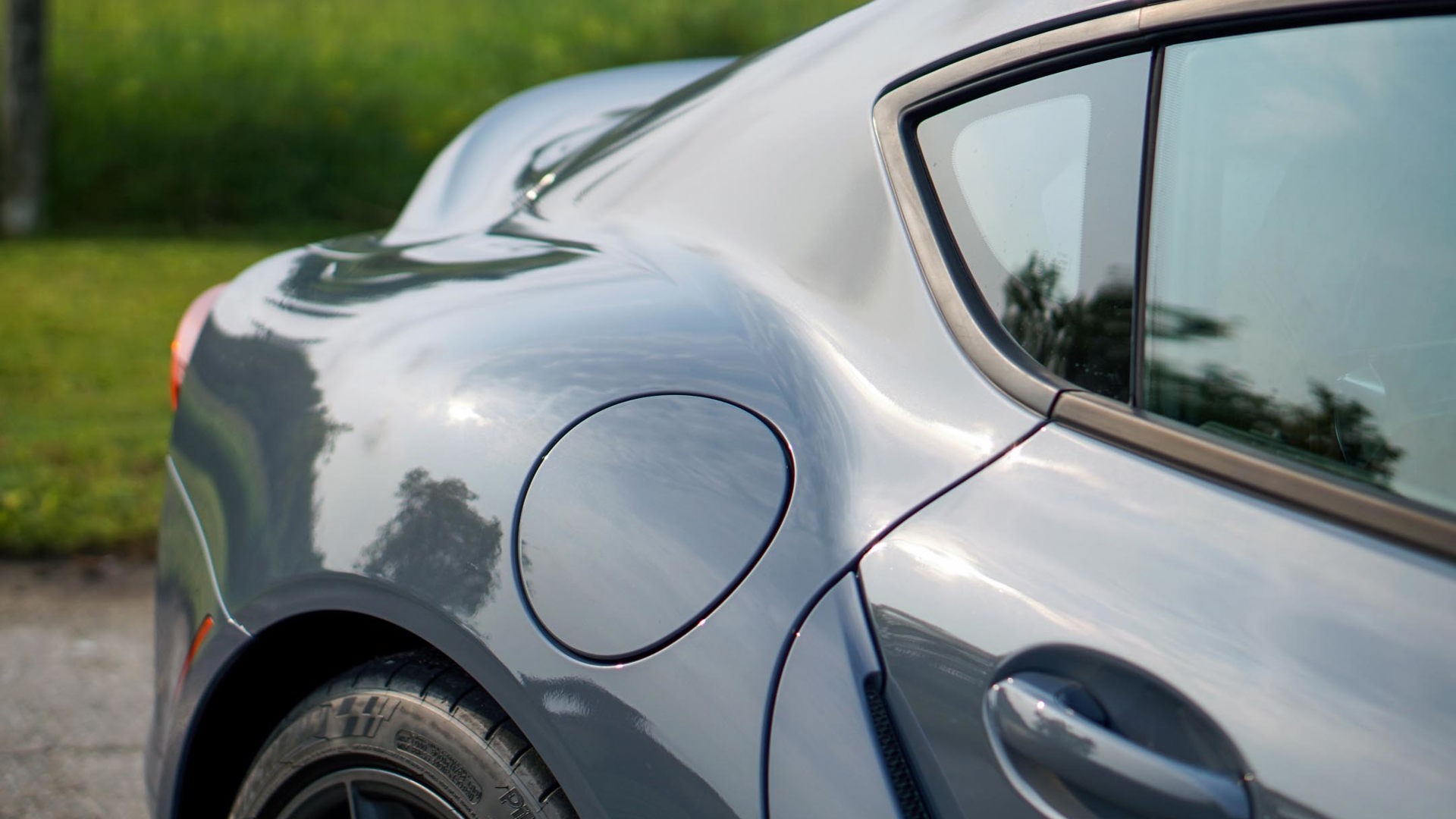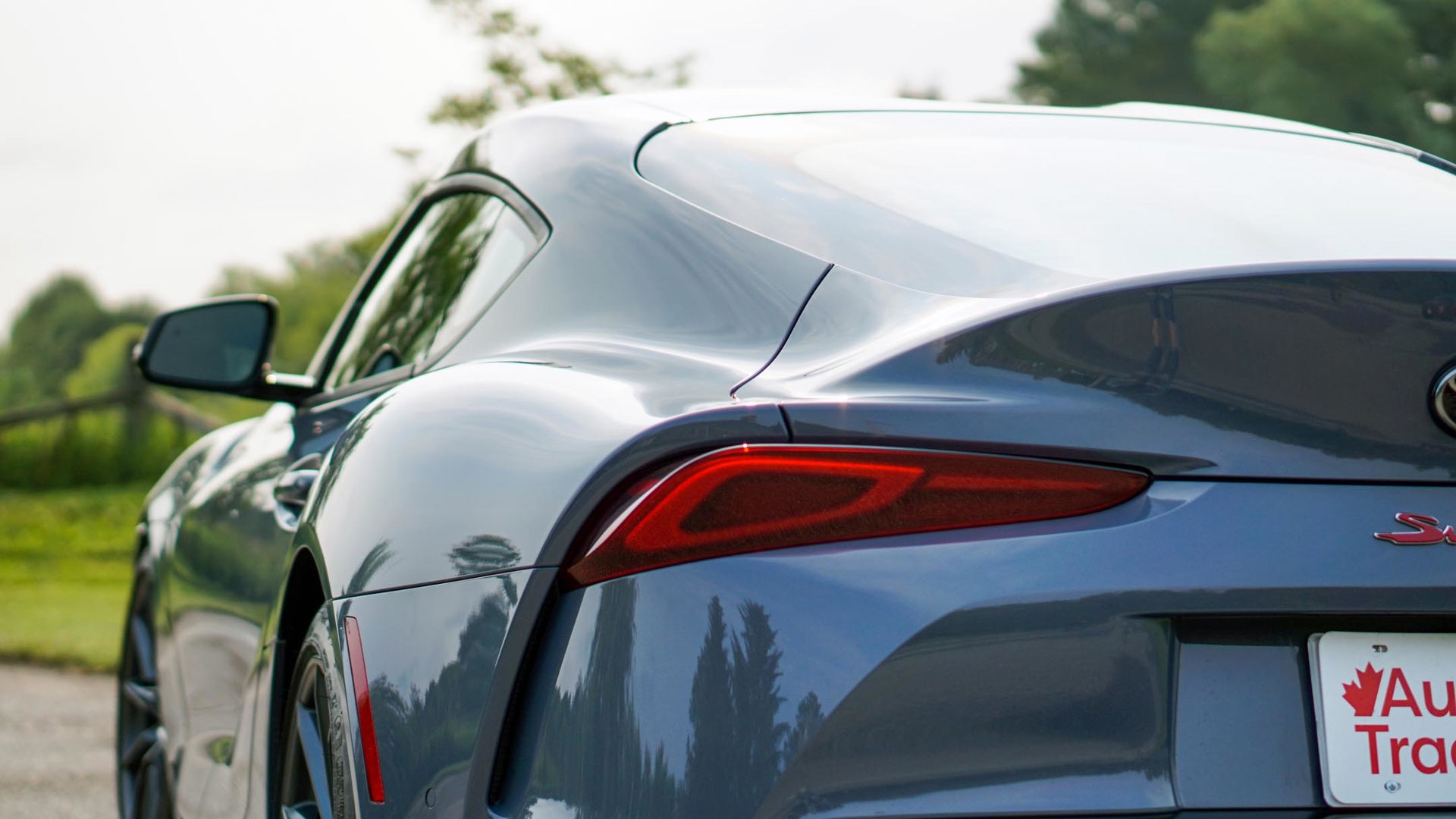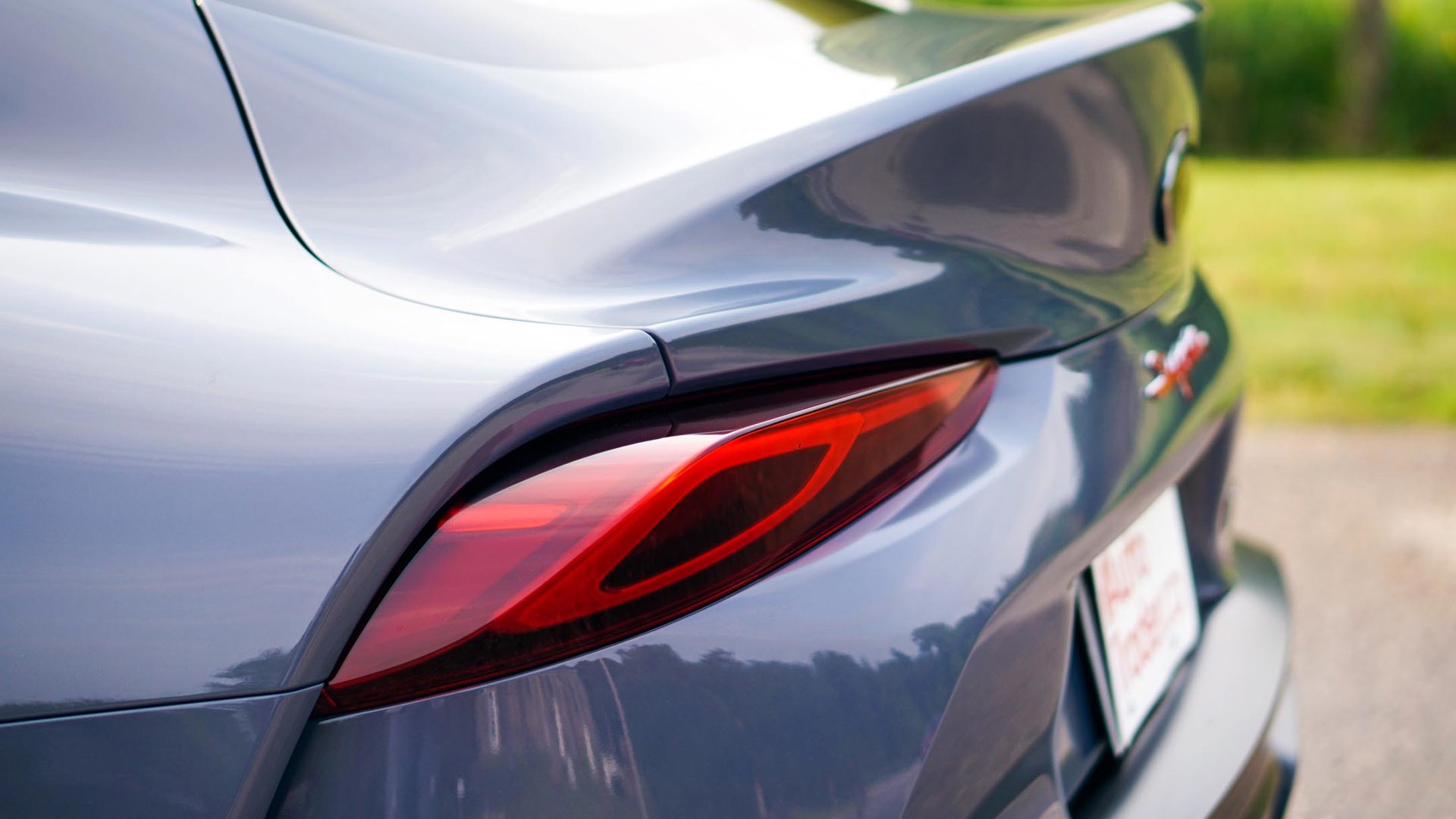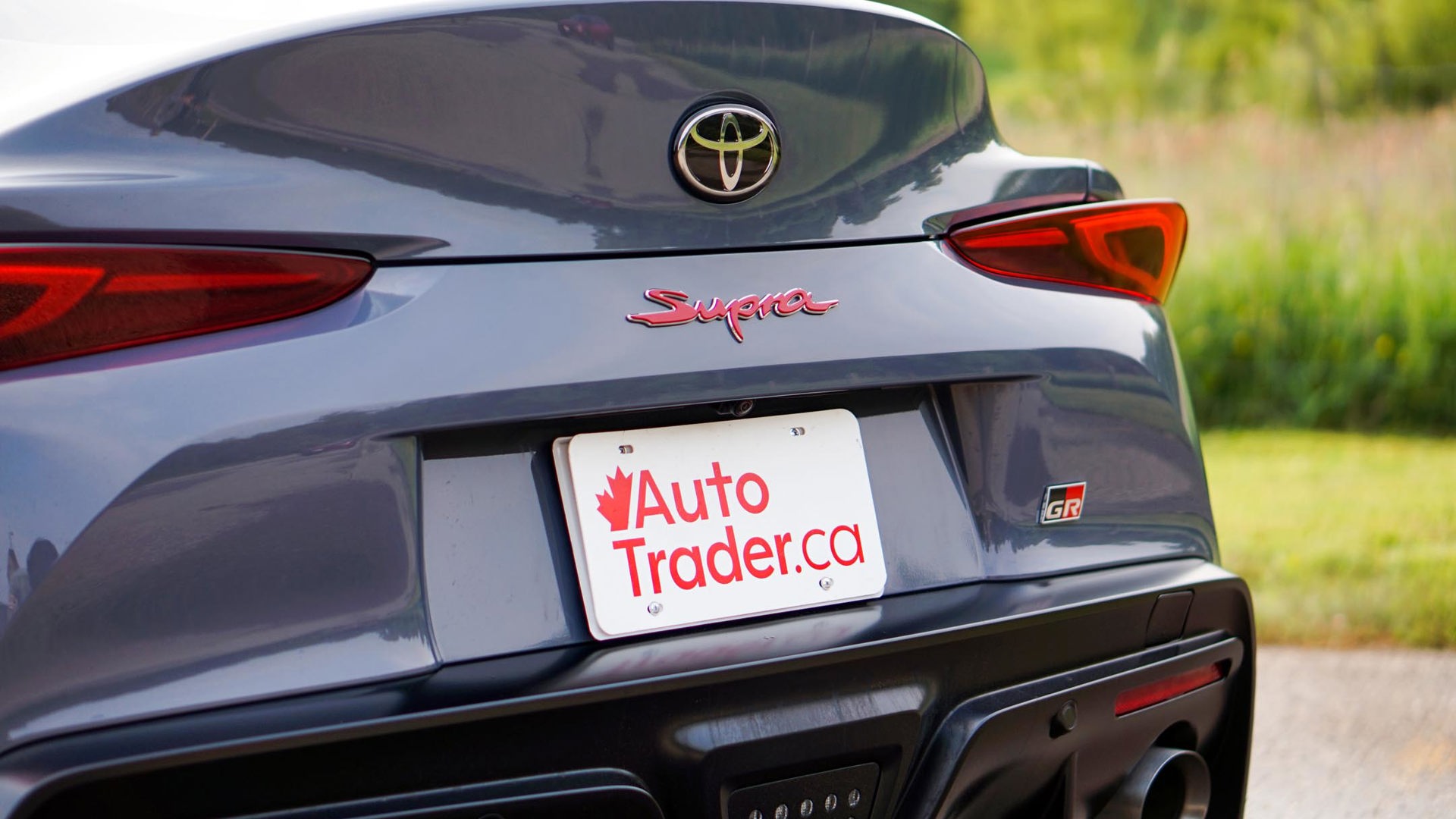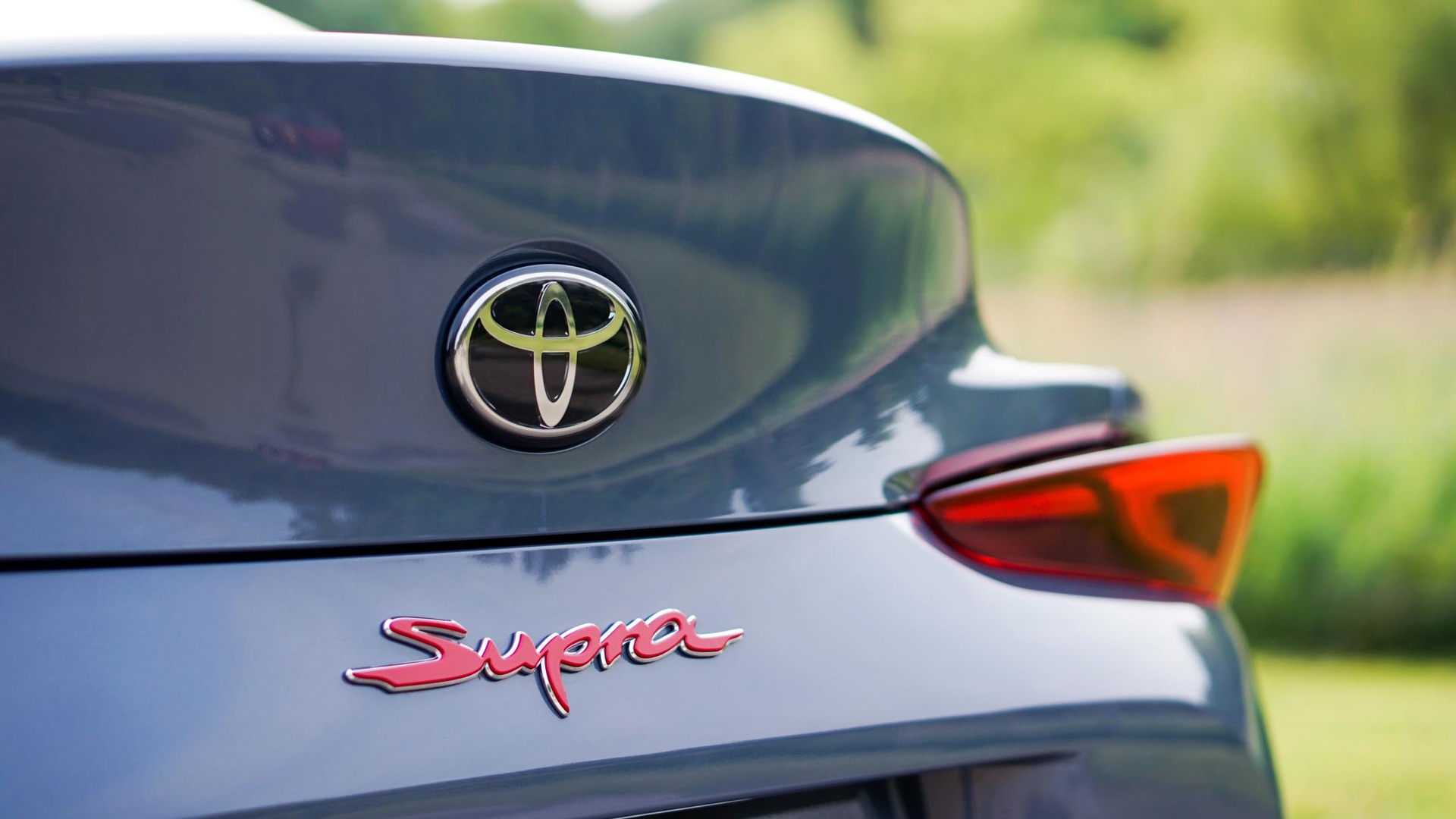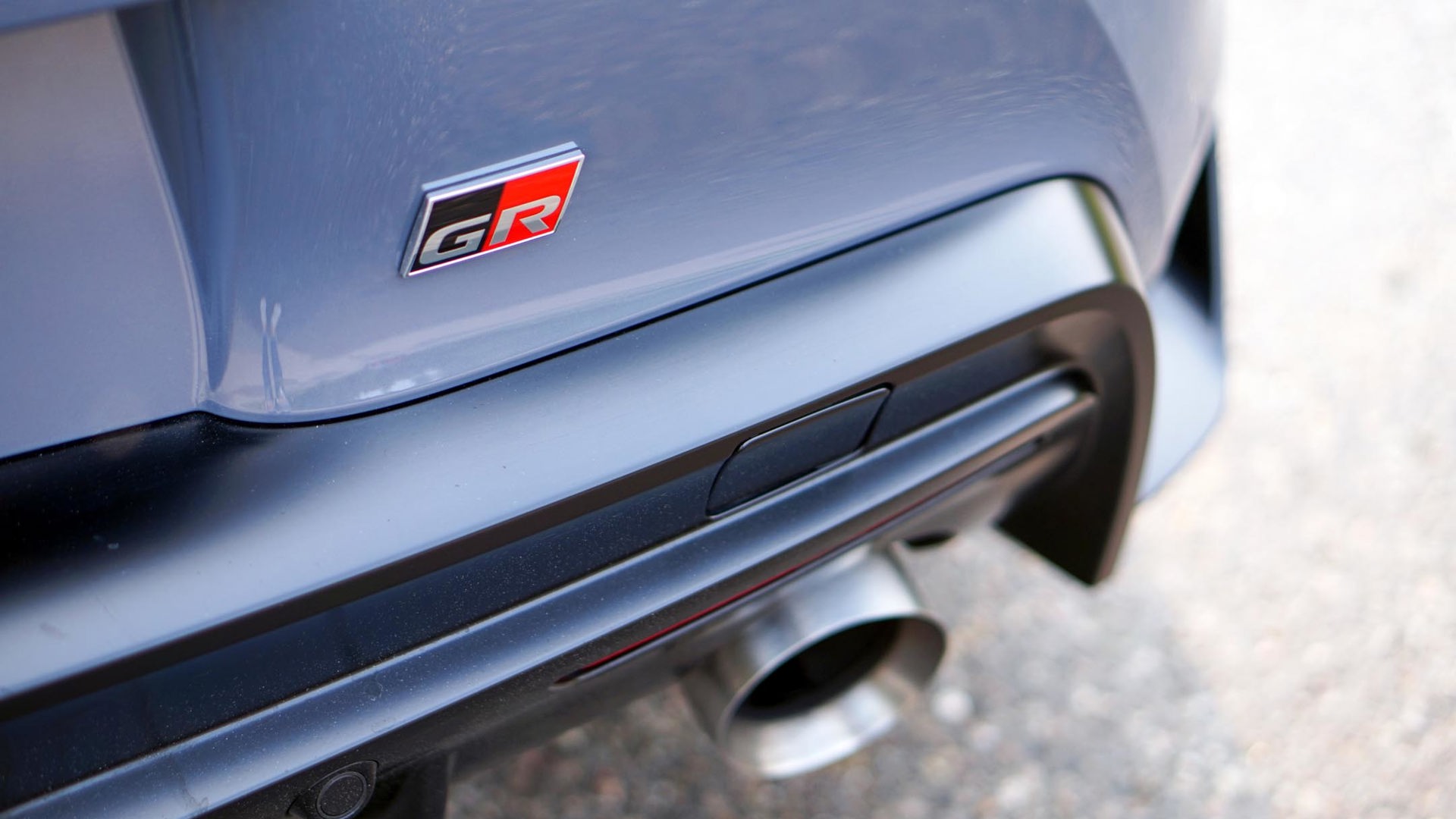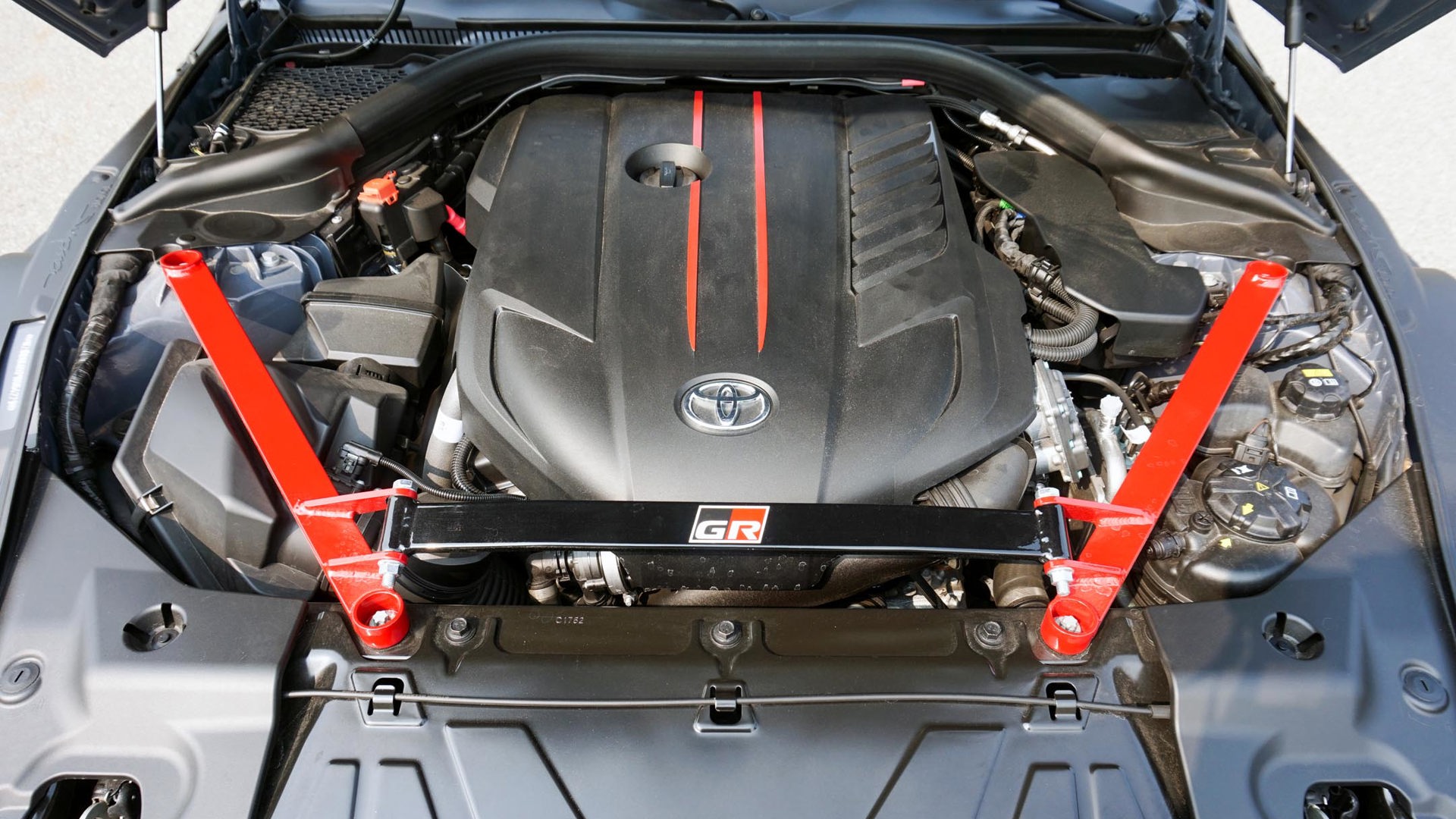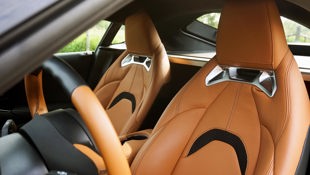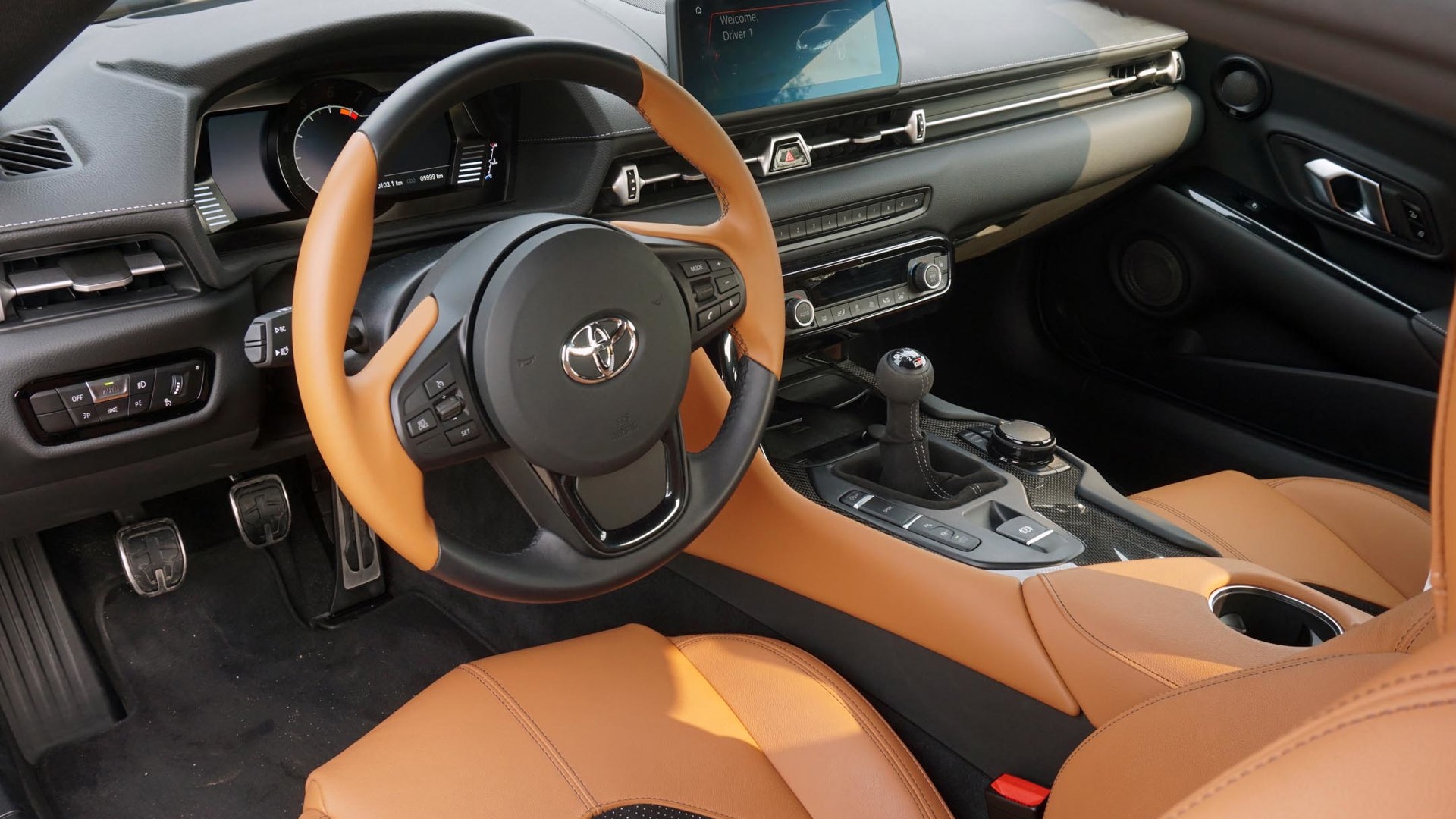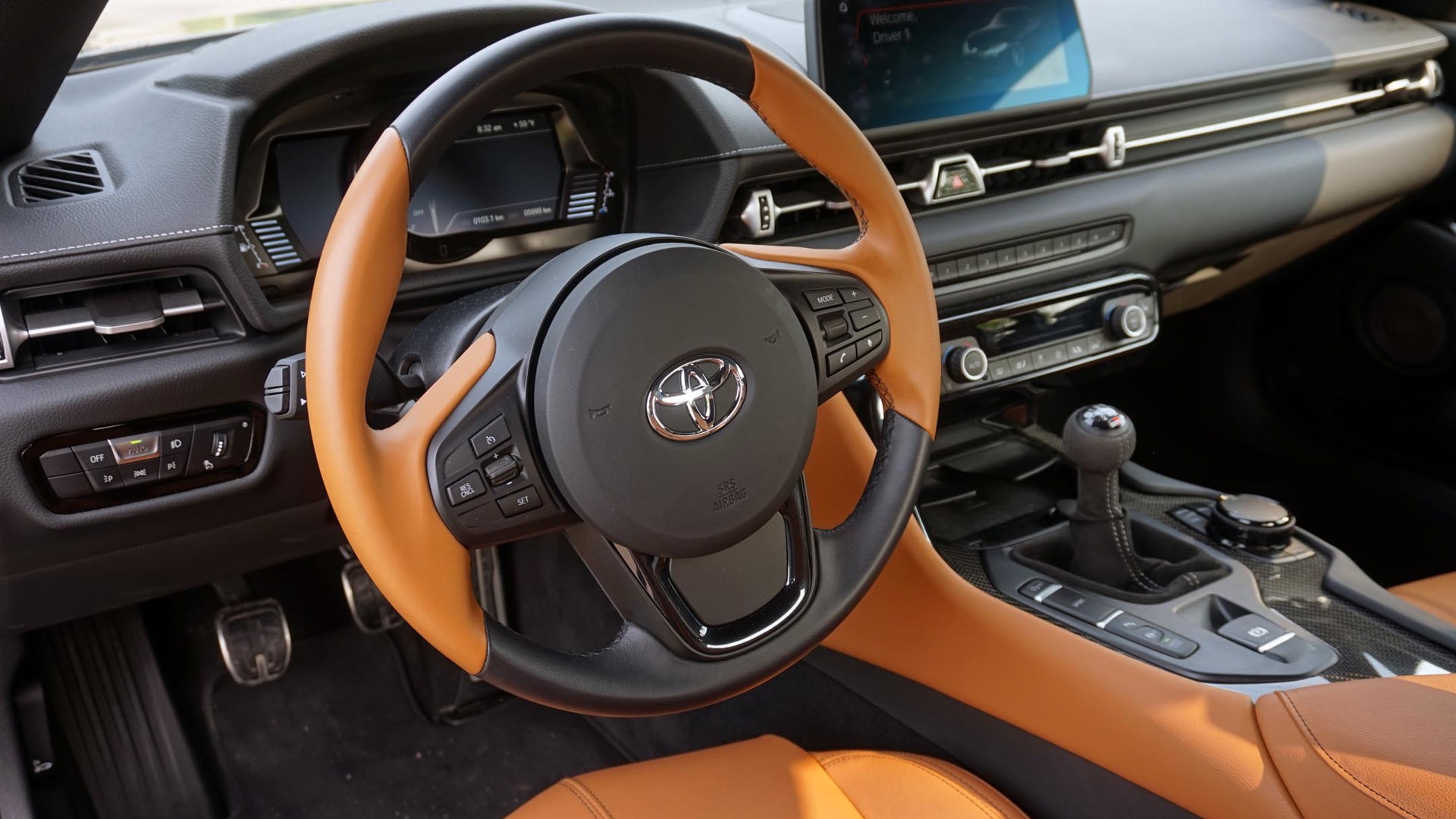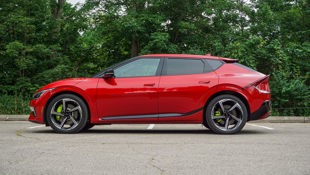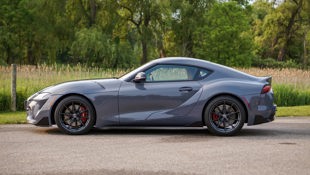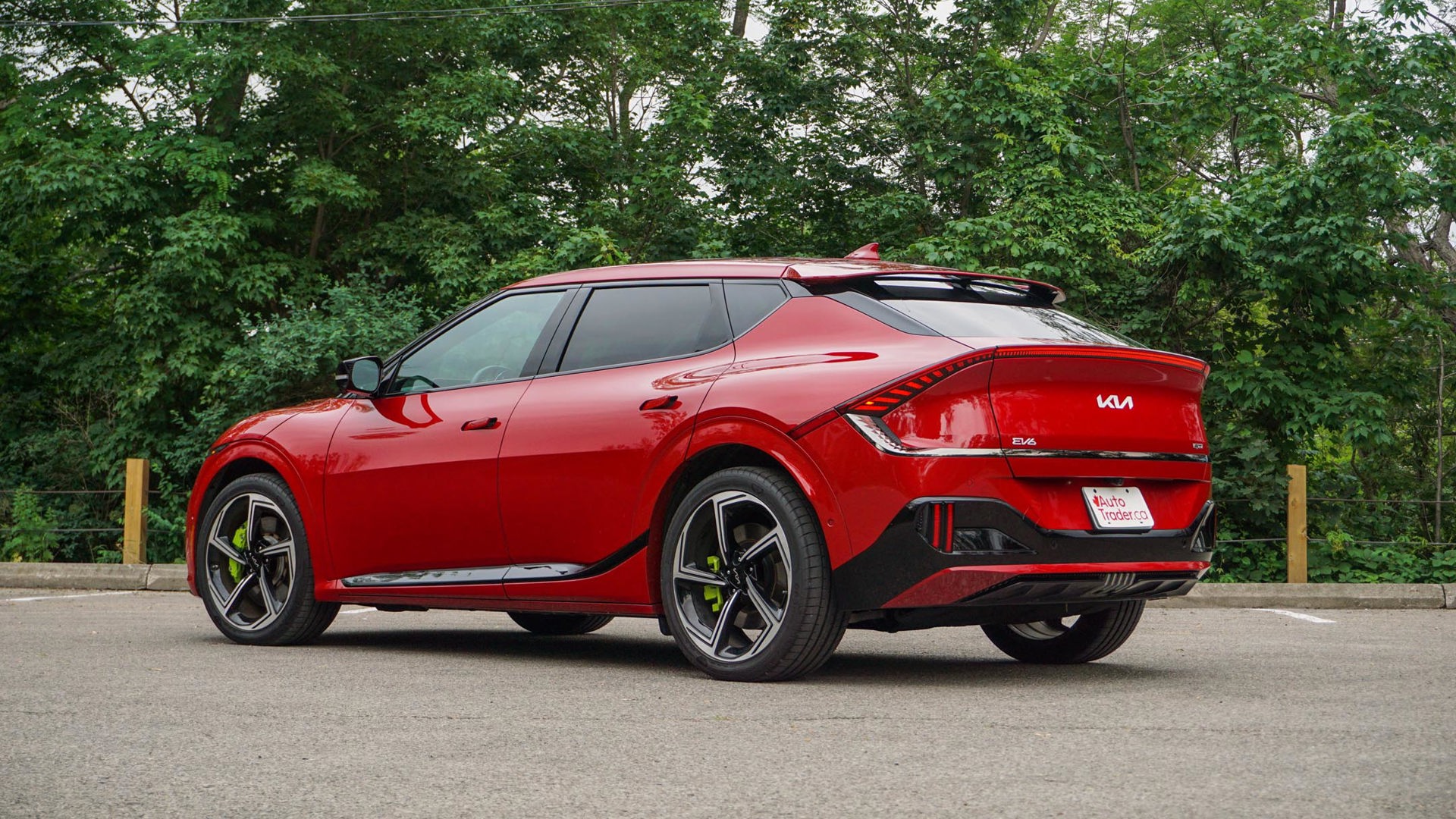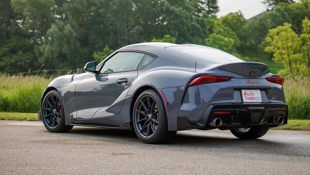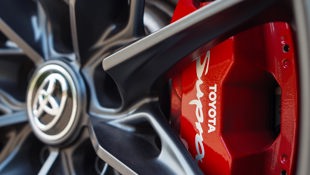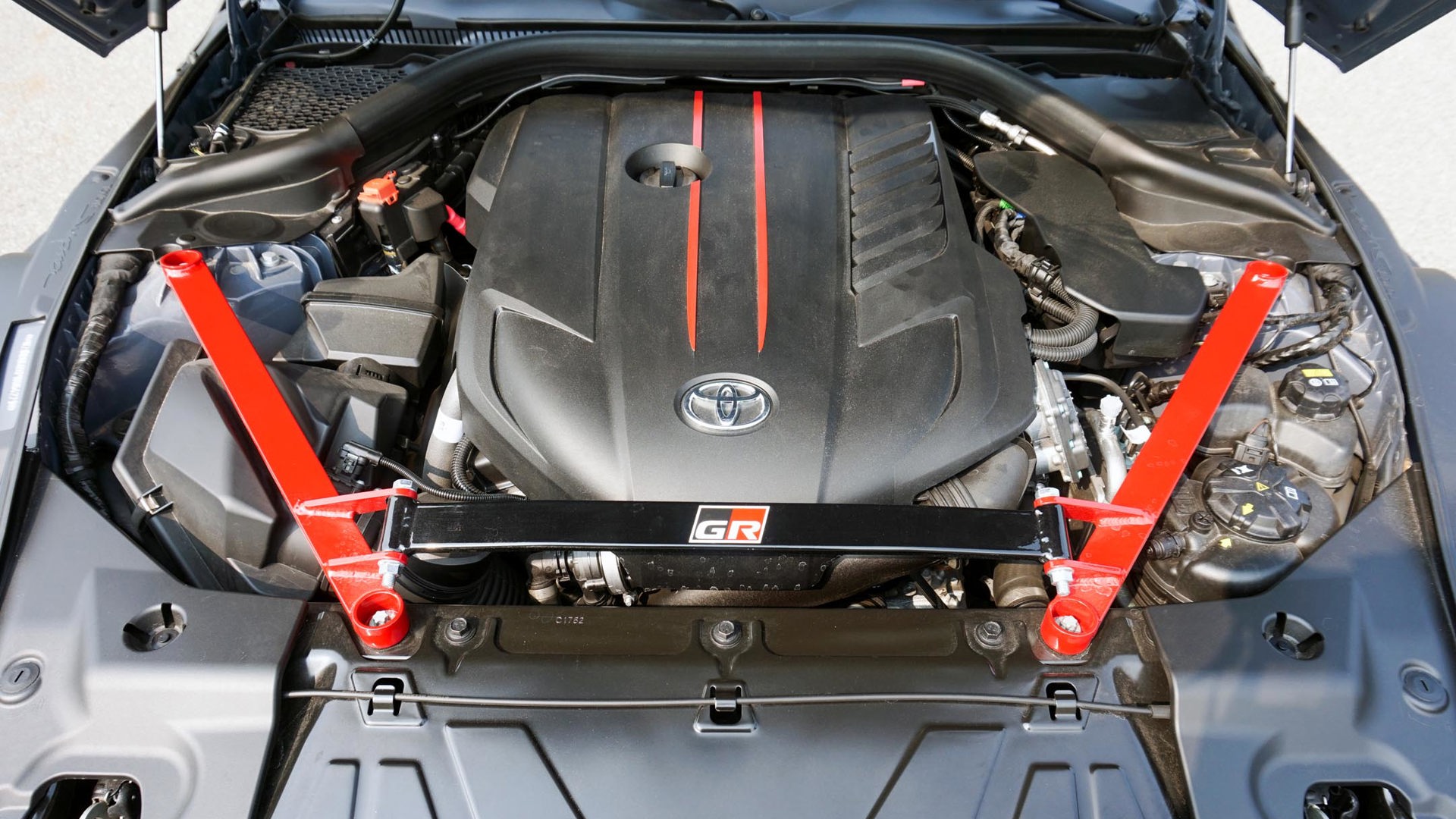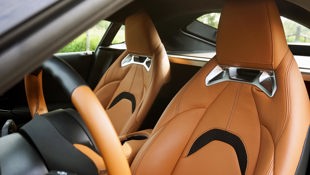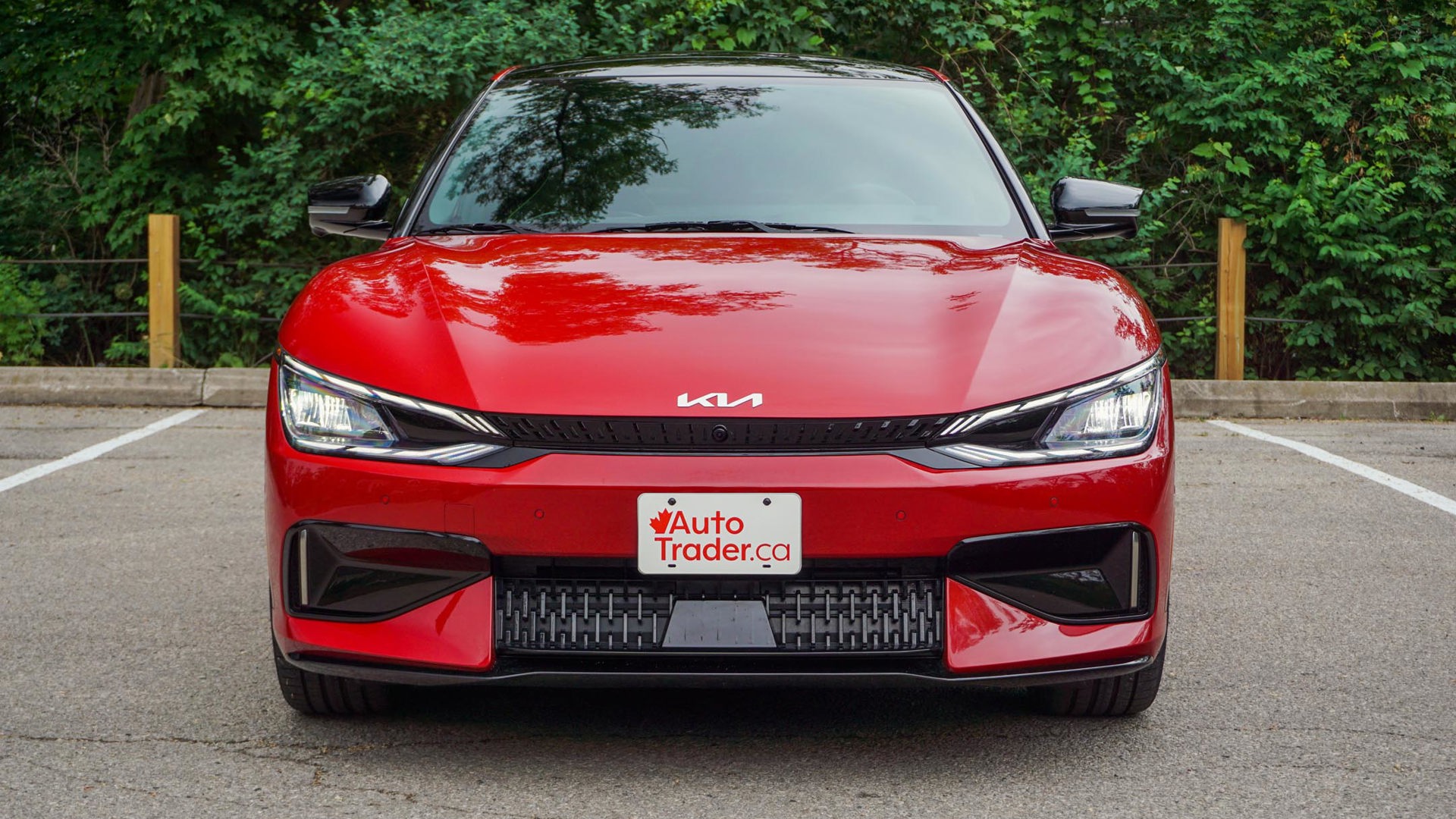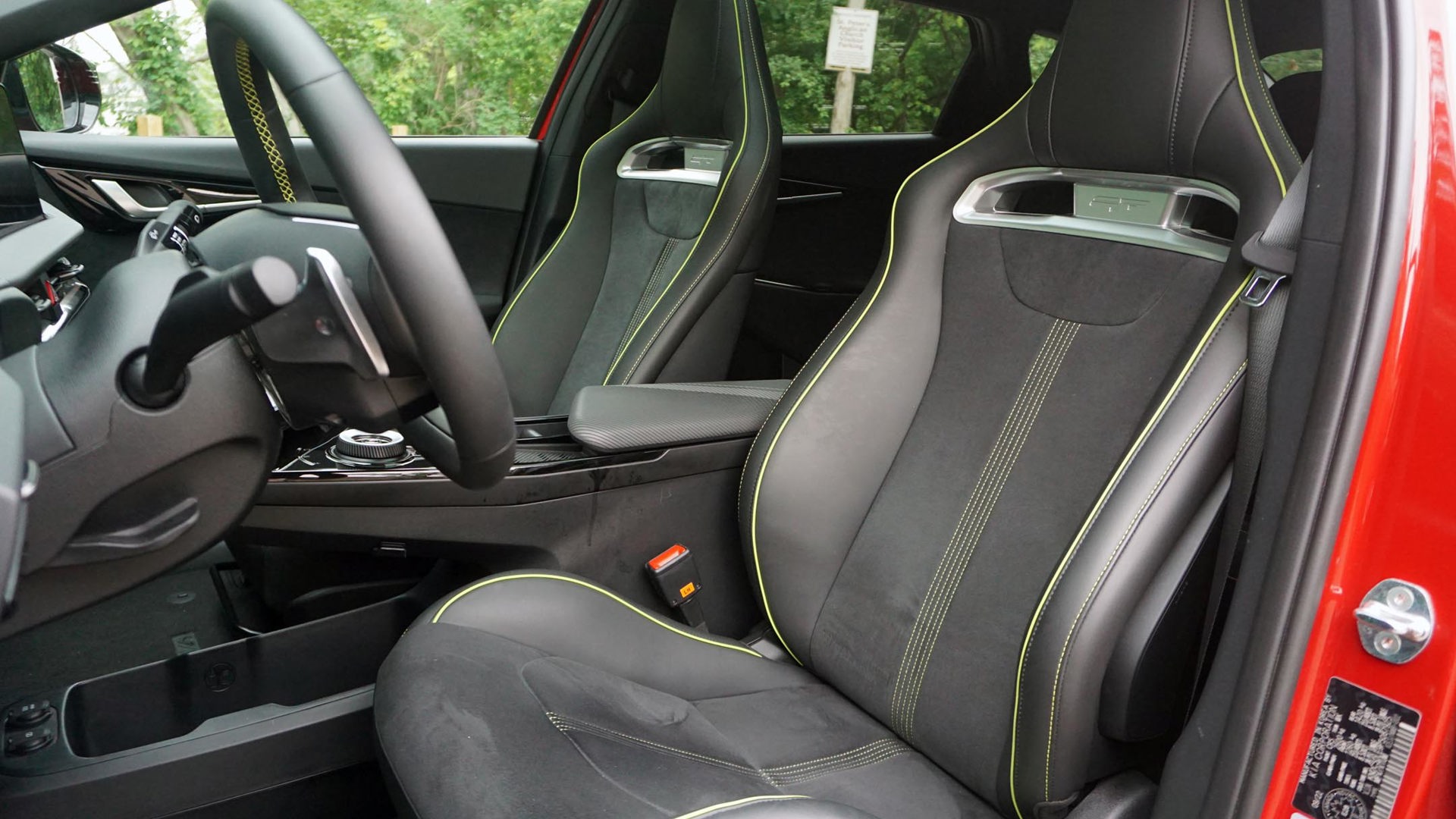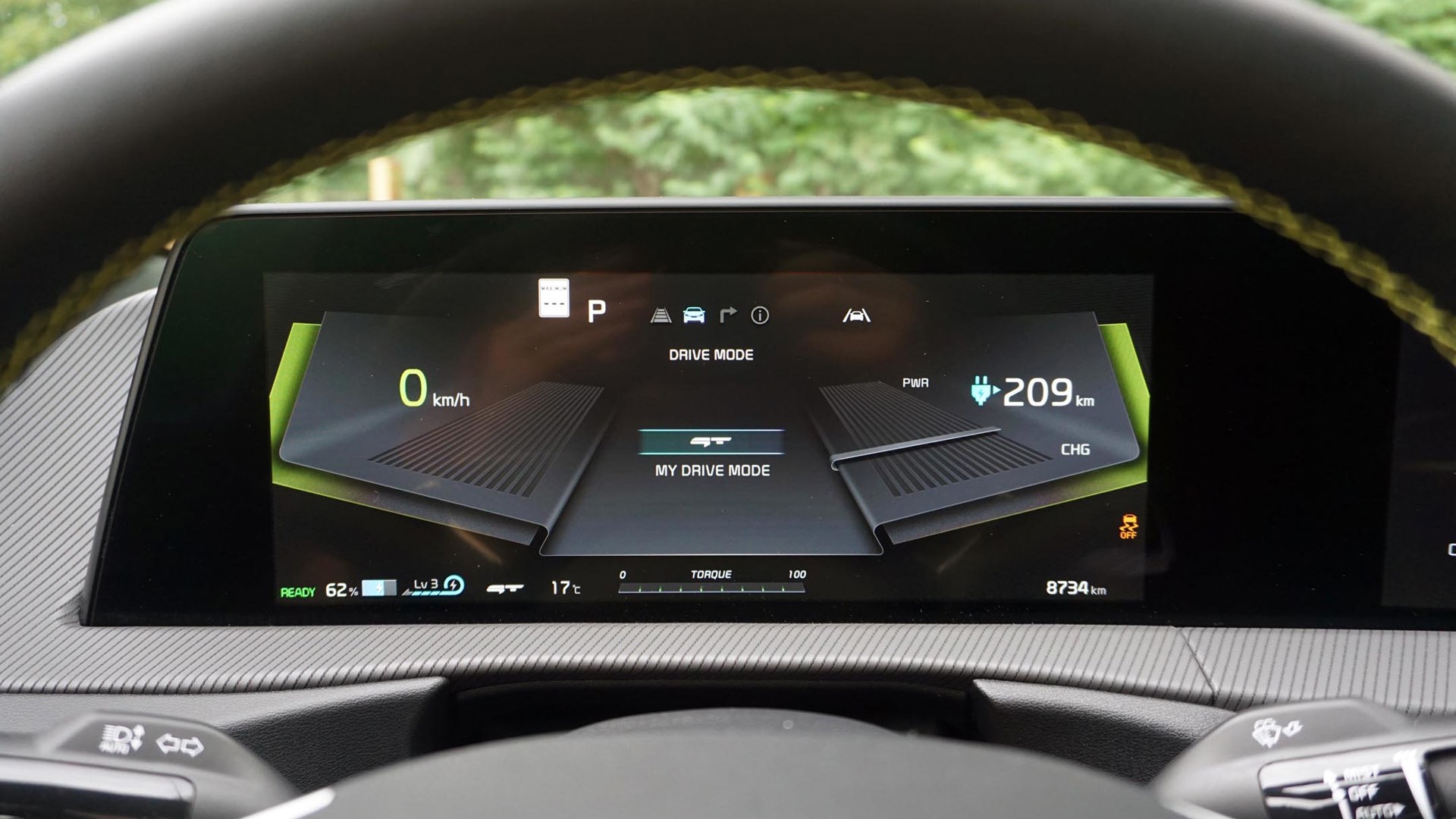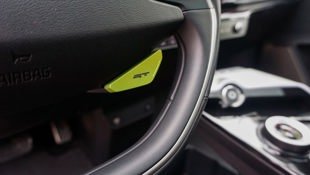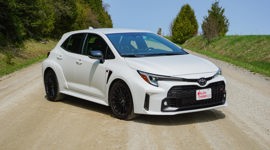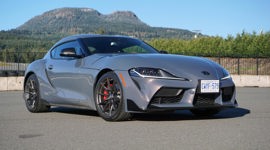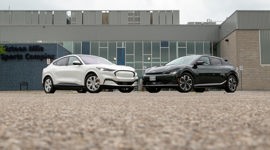Comparison Data
|
2023 Kia EV6 GT
|
2023 Toyota GR Supra 3.0 MT
|
|---|---|
|
Engine Displacement
430 kW
|
3.0L
|
|
Engine Cylinders
Dual electric motors
|
Turbo I6
|
|
Peak Horsepower
576 hp
|
382 hp @ 5,800–6,500 rpm
|
|
Peak Torque
545 lb-ft
|
368 lb-ft @ 1,800–5,000 rpm
|
|
Fuel Economy
2.8 / 3.2 / 3.0 Le/100 km, 24.7 / 28.4 / 26.4 kWh/100 km cty/hwy/cmb; 332 km est. range
|
12.7 / 8.8 / 10.9 L/100 km cty/hwy/cmb
|
|
Cargo Space
690 / 1,360 L seats up/down
|
289 L
|
|
Base Price
$74,495
|
$69,000
|
|
A/C Tax
$100
|
$100
|
|
Destination Fee
$2,000
|
$1,860
|
|
Price as Tested
$76,845
|
$72,590
|
|
Optional Equipment
$250 – Runway Red paint, $250
|
$1,630 – A91-MT Edition, $1,630
|
Don’t let the headline fool you: this isn’t a comparison – well, at least not a conventional one.
To qualify as such generally requires two or more vehicles that might actually be cross-shopped against one another. It borders on absolutely unthinkable that anyone would be putting this pair in a pros and cons list.
Yet here we have the all-electric 2023 Kia EV6 GT, a hatchback that comes about its performance pedigree almost by default. With electrification comes instantaneous torque delivery, which ratchets up quickness to absurd levels. While there’s more to performance than sprint speed, it’s a pretty good place to start.
Then there’s the 2023 Toyota Supra – a sports car that’s nearly as modern despite being more firmly rooted in an era of performance that’s slowly but surely drifting off with the tides of change. Looking at the one tested here in particular, the manner in which it turns the engine’s combustible force into forward momentum puts it on an even more endangered list of automobiles.
Value
Why, then, did we even bring these two together in the first place? Well for starters, they represent very different versions of what the new-car market has to offer at the moment in terms of the pinnacle of performance – and for similar price tags. For somewhere in the low- to mid-$70,000 mark before freight and tax, you can choose to be something of an early adopter or go the cold-dead-hands route.
The 2023 Kia EV6 GT has a sticker price of $74,495 – significantly less than the similarly positioned Ford Mustang Mach-E GT Performance Edition, and roughly the same as the Tesla Model Y Performance. Like both of its all-electric rivals, this range-topping EV6 doesn’t qualify for government rebates; what you see is what you pay. (Of course, this assumes you can find one at or near MSRP, but for the purposes of this exercise we’re going to pretend it’s a non-issue.)
Meanwhile, there are a few versions of the 2023 Toyota Supra to choose from, but this manual-equipped model is the latest addition to the lineup. It has a starting price of $69,000, which happens to be identical to the automatic version with the same six-cylinder engine, while the optional A91 Edition package fitted to this tester is worth an additional $1,630. Even so, simple math is all it takes to see that it’s the more affordable option – albeit only slightly.
Kia EV6 GT: 7/10; Toyota Supra: 8/10
Driving Feel
Of course, there’s much more to account for here than simple dollars and cents. And it’s here that we arrive at our first crossroads in this comparison.
Where the Supra feels slight and slithery, the EV6 simply doesn’t. The opposing sensations these cars present are palpable in just about every driving scenario, with the Toyota’s front engine, rear drive layout paying big dividends. Its BMW bloodlines form a strong foundation for precision and fun, while the six-speed manual makes it feel light and lively like its smaller – and significantly less powerful – sibling, the Toyota GR86.
The EV6 GT is more firmly planted on the road, and not just because it outweighs the Supra by nearly 640 kg (1,411 lb). Its track, so the distance between the centres of its wheels, is 1,628 mm (64.1 in) up front and 1,636 mm (64.4 in) in the back compared to the Toyota’s 1,595 mm (62.8 in) and 1,590 mm (62.6 in), respectively. Combined with the ultra-low centre of gravity afforded by the battery pack that spans the floor, this Kia changes directions like a single-rail roller coaster.
Toss these two into the same corner and the results are as different as their drivetrains, with the Supra responding in a far more conventional manner. With all its torque heading to the rear wheels, and the 275-mm (10.8-in) Michelin Pilot Super Sport tires providing plenty of stick, there’s the unmistakable corner-slicing sensation that only a sports car like this one provides. Behind the wheel of the EV6 GT, the g-forces pull hard but with far less drama as it finds itself on the other end of each turn in the road.
Kia EV6 GT: 9/10; Toyota Supra: 10/10
Power
Beyond their different drive layouts, these generate output in unique manners. This all-electric Kia uses a pair of permanent magnet motors, one mounted at each axle, to spin up a fairly outrageous 576 hp and 545 lb-ft of torque. It heads to all four wheels in a hurry, with none of the waiting that comes with internal combustion. The result is a car that’s capable of reaching 100 km/h from a standing start in a claimed 3.4 seconds. Numbers aside, the instantaneous nature of electric torque delivery makes this Kia feel even quicker than it actually is.
What Toyota – and, by virtue, BMW – has achieved with the Supra’s straight six-cylinder engine is commendable, but those concerned with numbers and outright quickness might be left looking for more next to its all-electric foe. Make no mistake: this turbocharged 3.0L is one of the finest engines around; and the 382 hp and 368 lb-ft of torque it generates is more than ample. It means this car is no slouch, covering the same zero-to-100 km/h dash in an estimated 4.4 seconds or so with the manual transmission.
Looking past the spec sheet, what the six-cylinder Supra has going for it is a visceral experience an electric vehicle (EV) simply can’t replicate. Heck, most other gas-powered cars can’t match this one when it comes to sensory delights. Like just about every other straight-six out there, this 3.0L is smooth and balanced, while the intake and exhaust noises it makes only add to the excitement and engagement. Ditto the manual transmission, which is tactile enough to tell you what it’s doing without losing any of the smoothness you’d expect from a $70,000 sports car.
Kia EV6 GT: 10/10; Toyota Supra: 10/10
Fuel Economy
No category in this comparison falls more favourably in one direction than fuel consumption. Such is the case when a gas-burning car is pitted against one that runs on nothing but electrons.
In the case of the manual-equipped Supra, Natural Resources Canada (NRCan) projects a combined consumption rate of 10.9 L/100 km. That’s about average amongst internal combustion competitors like the twin-turbocharged Nissan Z (11.9) and Ford Mustang GT (10.2). When it comes to the EV6 GT, its 77.4-kWh battery pack provides an estimated range of 332 km on a full charge – significantly less than regular variants of this Kia, not to mention the performance versions of the Ford Mustang Mach-E (418 km) and Tesla Model Y (488 km).
Kia EV6 GT: 9/10; Toyota Supra: 6/10
Practicality
A close second to fuel economy as far as lopsided categories are concerned is practicality, which once again falls in favour of the EV6. For starters, it’s a hatchback, which is inherently more practical than a coupe. It also has four full seats inside compared to the Supra’s two. But when it comes to performance cars, practicality places pretty low on our priority list here at AutoTrader.
Kia EV6 GT: 9/10; Toyota Supra: 6/10
User Friendliness
Toyota hooking up with BMW to build the Supra makes sense from a performance perspective, but it would have been better off implementing its own interface. And in fairness, the system inside is far from unusable, but it’s not as straightforward as Toyota’s own approach to in-car interactions. Even so, most of the stuff that matters here in terms of performance is easily accessible, with the auto rev-match function the lone exception. (It takes a few taps of the touchscreen to pull up the menu where it can be enabled or disabled.)
The get-in-and-go simplicity that’s sweeping the electric market is on full display in the EV6 – sort of. Its deployable door handles can be slow to respond when approaching the vehicle, and it still relies on a push-button starter. But it’s arguably easier to tap into the full performance potential here. A button on the left side of the steering wheel cycles through the different drive programs, including sport, while the screaming green one on the right uncorks the full potential of the powertrain either through GT mode or one that allows you to mix and match various performance-related settings. There’s also a hidden drift mode that sends torque only to the rear wheels; it’s activated by using a specific sequence that includes putting the car in park, shutting off traction control, and holding both regen paddles on the steering wheel for a few seconds.
Kia EV6 GT: 9/10; Toyota Supra: 7/10
Features
Where the Supra is completely kitted out with creature comforts and performance goodies, the EV6 GT isn’t quite as generously equipped. Put another way, when it comes to niceties, the Supra’s luxury-brand lineage is obvious. The leather-wrapped seats are 14-way adjustable, including expanding bolsters, while there’s a genuine sense of upscale swagger inside. In terms of performance, the Supra has adaptive dampers at all four corners, a front strut tower brace, variable exhaust, launch control, and four-piston Brembo brakes up front.
This Kia’s cabin isn’t quite as well crafted but it’s close, and the contoured sport seats up front dutifully play the role of proper performance buckets. They’re heated, as are the Supra’s, but the ventilation and memory settings that are part of lesser EV6 packages have been ditched. That also means the seats are manually adjustable. But then this GT version gets performance upgrades like bigger brakes front and back, electronically controlled dampers at all four corners, and a tweaked front suspension setup.
Otherwise, they both offer the stuff you’d expect these days like touchscreen infotainment, smartphone-mirroring connections (although the Supra only gets Apple CarPlay, not Android Auto), satellite radio, and premium stereos. With the understanding that their asking prices are largely paying for performance, neither of these machines feel like they’re missing much.
Kia EV6 GT: 7.5/10; Toyota Supra: 9/10
Comfort
Neither of these should be considered punishing to drive, and both do better than the average stiffly sprung performance car to soak up road imperfections. Being as low-slung as it is, the Supra is a little awkward to climb in and out of; and the way its roofline wraps down toward the door glass makes outward visibility harder to come by for tall occupants. But then the cozy confines of its cabin help to enhance the excitement of the drive experience.
Kia EV6 GT: 8/10; Toyota Supra: 7.5/10
Styling
Having the opposite effect is the tan leather the Supra’s seats are wrapped in with the A91 package added. While unquestionably soft and supple, it adds an element of old luxury that the Supra doesn’t need (and doesn’t have when fitted with the black and red stuff inside the four-cylinder version). Even so, the exterior styling is about as striking as it gets this side of six figures. From the protruding front end to the double-bubble roof and the integrated duckbill spoiler around back, every angle offers visual excitement.
The Kia EV6 is about as polarizing in appearance, but in a way that’s much more typical of a sleek and slippery EV. Its bulging fenders and smooth body lines give it the look of a giant jelly bean that happens to be blisteringly quick. But while this GT version’s cabin is cool, with lime green stitching and faux-suede upholstery front and back, the outward appearance is almost identical to that of the car it’s based on. In fact, if it weren’t for the green brake calipers it would be easy to mistake this for a run-of-the-mill EV6.
Kia EV6 GT: 8/10; Toyota Supra: 9/10
Safety
There isn’t much separating the EV6 GT and Supra when it comes to advanced safety features, but there are some significant differences. Here again we have a category that favours the Kia, which makes sense given its humbler roots. That means everything from adaptive cruise control that works in stop-and-go traffic to blind-spot monitoring, forward collision warning, and a junction turn assist function that can warn of oncoming traffic when making a left is all included. There’s also a head-up display system and surround-view monitoring, to name a couple more items.
Even with this manual transmission, Toyota has stuffed this sports car with a suite of systems that can keep the car between lane markings or warn of impending danger. However, the Supra skips blind-spot monitoring, and the six-speed version drops adaptive cruise control in favour of a conventional system that can’t match speeds with preceding traffic.
Kia EV6 GT: 9.5/10; Toyota Supra: 7/10
The Verdict
Looking at the numbers alone, the 2023 Kia EV6 GT cruises to an easy victory here. But there’s much more to the story than simple scores. This pair sums up the existential challenge the very idea of driving enjoyment is up against at the moment. This is a segment that’s at something of a crossroads, with electrification slowly but surely seeping into this formerly sacred space, meaning the days are numbered for cars like the Toyota Supra.
In a way, it’s a bit like the oil crisis of the 1970s that brought muscle car mania to a grinding halt. But then it also paved the way for an entirely new segment of sport compact cars like the Volkswagen Golf GTI that’s still going strong to this day. But where the GTI was chided back then for being small and underpowered, the EV6 GT has arrived as a heavyweight alternative to traditional performance cars that hits like a thunderclap.
To no fault of Kia’s, what’s missing is the visceral and multifaceted side of performance we’ve all come to know and love. It’s also something the Supra delivers with ease. Its manual transmission only enhances the experience while acting as something of a wave farewell to a fading generation.
It’s not a question of if electrification will sweep through the performance market but when, with the likes of Porsche’s 718 Series dropping its gas engines after the current generation runs its course. There’s no denying that the future is bright for performance EVs, but what’s missing at the moment is the holistically visceral experience sports cars like the Supra have offered for years.
Even with the artificial sounds pumping from the speakers in a car like the EV6 GT, there’s no connection to what’s actually happening. It’s a bit like watching an action movie in a 4DX theatre with moving seats and all sorts of environmental effects, but with the audio off – or at least out of sync. There’s no question that the potential of electrification is there; but the challenge for automotive engineers remains not reinventing the emotion of internal combustion but recapturing it. Until then, long live the tachometer and all the drama that comes with it.

